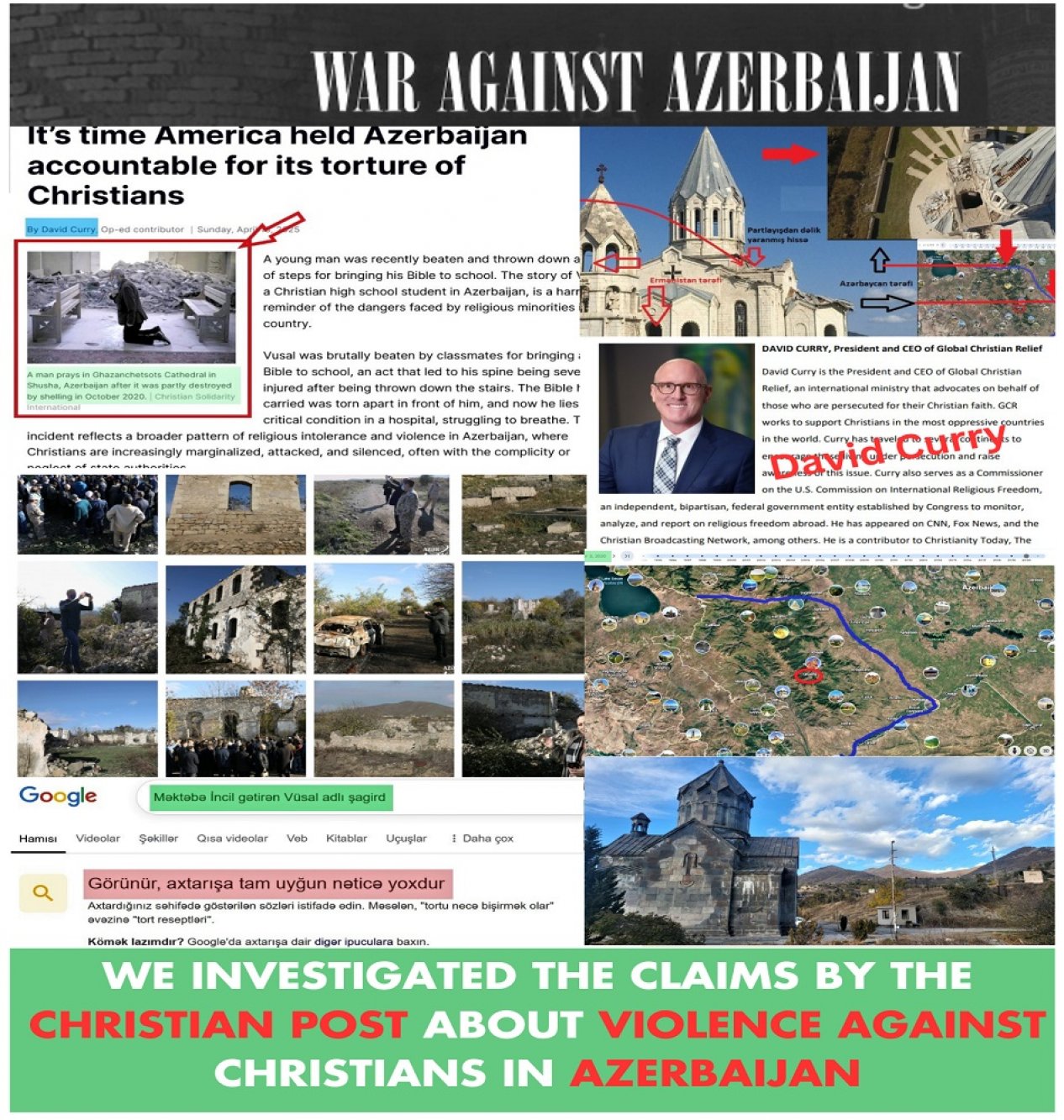
The U.S.-based publication The Christian Post has once again published a biased and slanderous article, aiming to create a negative impression regarding alleged violations of religious freedom in Azerbaijan, with particular emphasis on the supposed destruction of Christian religious monuments (source)
It claims that violence against Christians in Azerbaijan has sharply increased over recent years, with incidents of the destruction of Christian buildings rising from three to seven. Thousands of Christians are said to have been persecuted due to their religious beliefs, forcing them to flee their homes. Azerbaijan is reportedly considered a country of particular concern for severe violations of religious freedom. Calls have been made for holding Azerbaijan accountable for the alleged torture of Christians, with statements such as, 'It is time to hold Azerbaijan accountable for torturing Christians.”
The Faktyoxla Lab. (FactChecking Lab.) has investigated the claims made by David Curry, the former president of Global Christian Relief, in his article.
Let’s begin with the photo chosen for the article. The Christian Post published an image of an elderly man praying on his knees against the backdrop of destruction, with the caption: 'A person prays at the Gazanchy Church in Shusha, partially destroyed as a result of a rocket attack by Azerbaijani forces in October 2020.' For readers unfamiliar with the facts (truth), at first glance, there may seem to be nothing unusual.

Since we have already presented a historical investigation of the Gazanchy Church (referred to as Ghazanchetsots by Armenians), we will not revisit this topic here. (source)
Our goal is to clarify the reports concerning the targeting and deliberate destruction of Azerbaijan’s Gazanchy Church, which has been persistently propagated as disinformation by media outlets influenced by Armenians and the Armenian lobby over the past five years.
This reflects the condition of the Gazanchy Church in the mid-20th century.
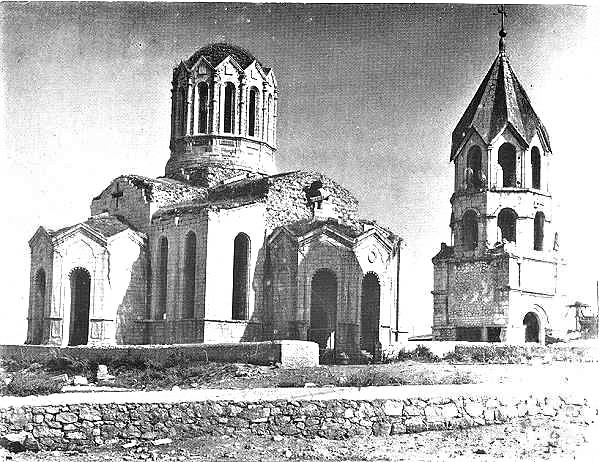
This photo, meanwhile, was taken a few days after the occupation of Shusha by the Armenian Armed Forces on May 8, 1992.
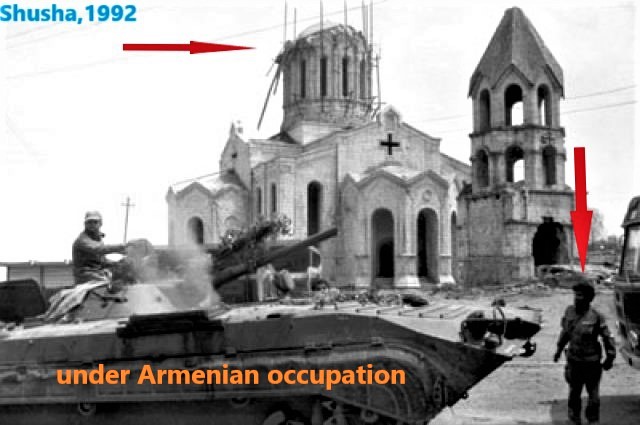
These, in turn, are the alterations made to the church by the Armenians after the occupation.
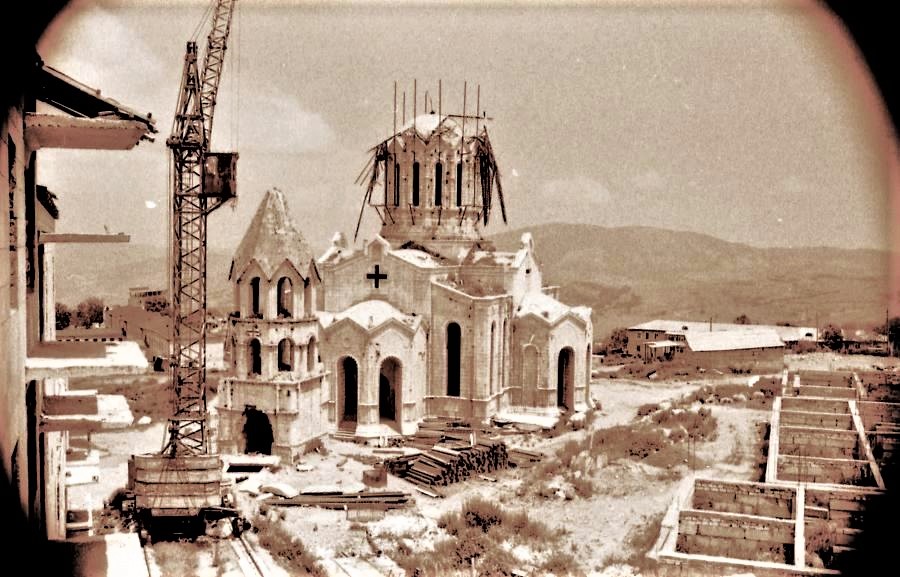
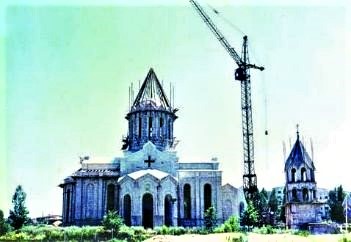
The photo screenshots presented below show satellite images of the city of Shusha and its surrounding areas, taken on April 3, 2020 (sourced from Google Earth).
This screenshot shows the territories, including the city of Shusha, that were under the occupation of the Armenian Armed Forces on the specified date (the day the church was reportedly shelled).
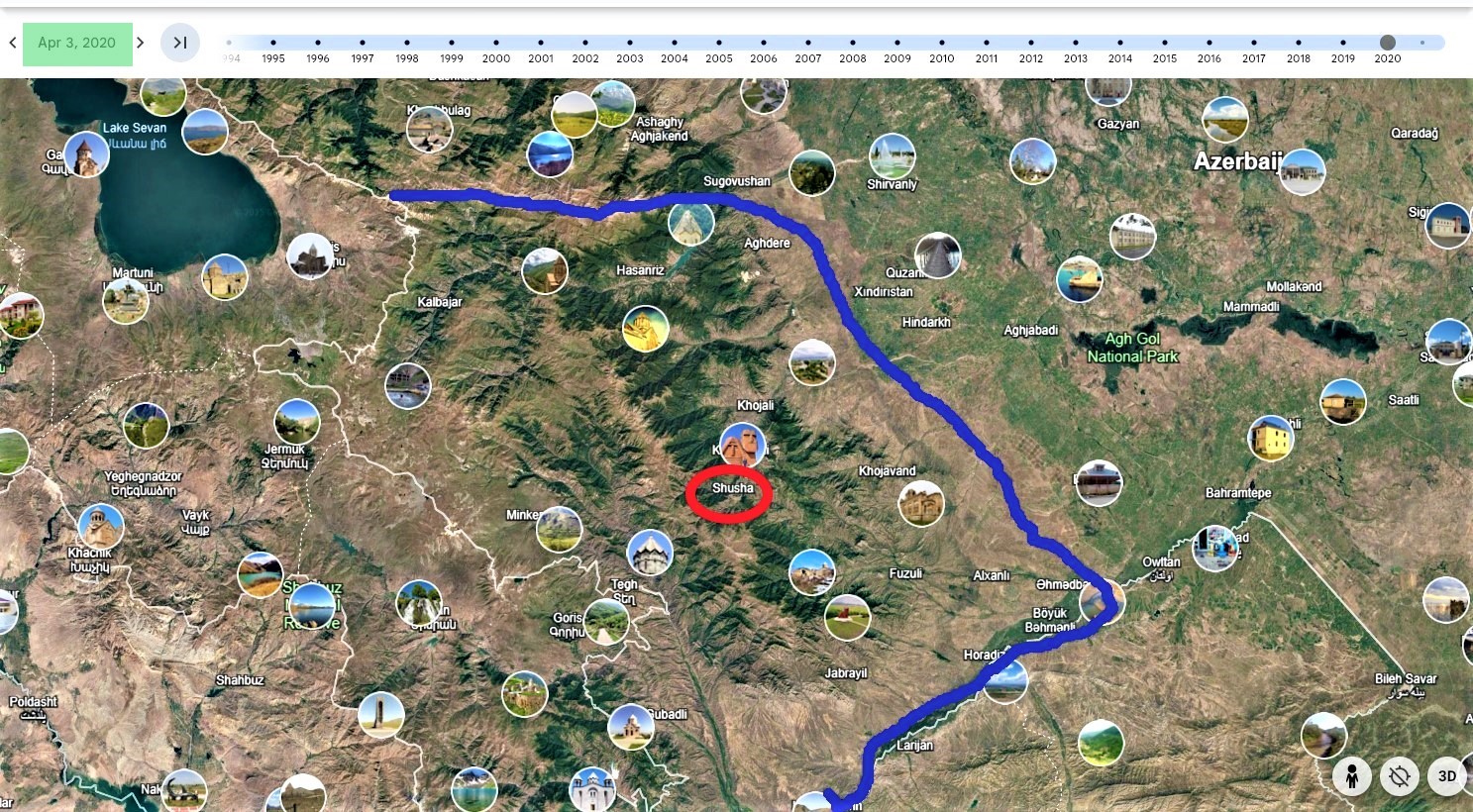
This screenshot shows the city of Shusha.
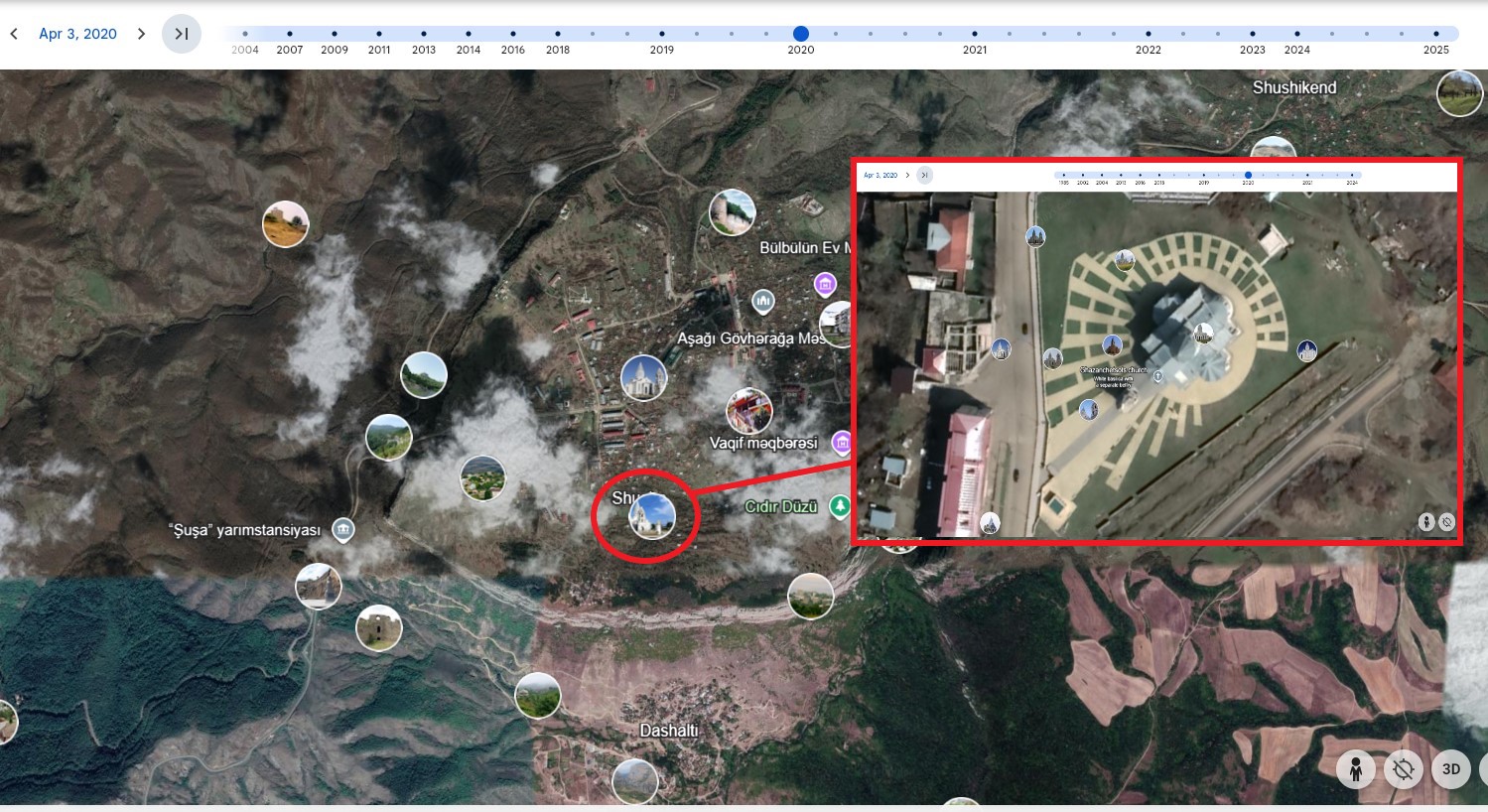
These photos, meanwhile, were taken and disseminated by Armenians after the church was shelled. The phrase ‘Azerbaijani side’ written on the photos serves solely to indicate direction. It should be noted that at that time, the closest distance to the church from the Azerbaijani side was no less than 70-80 km.
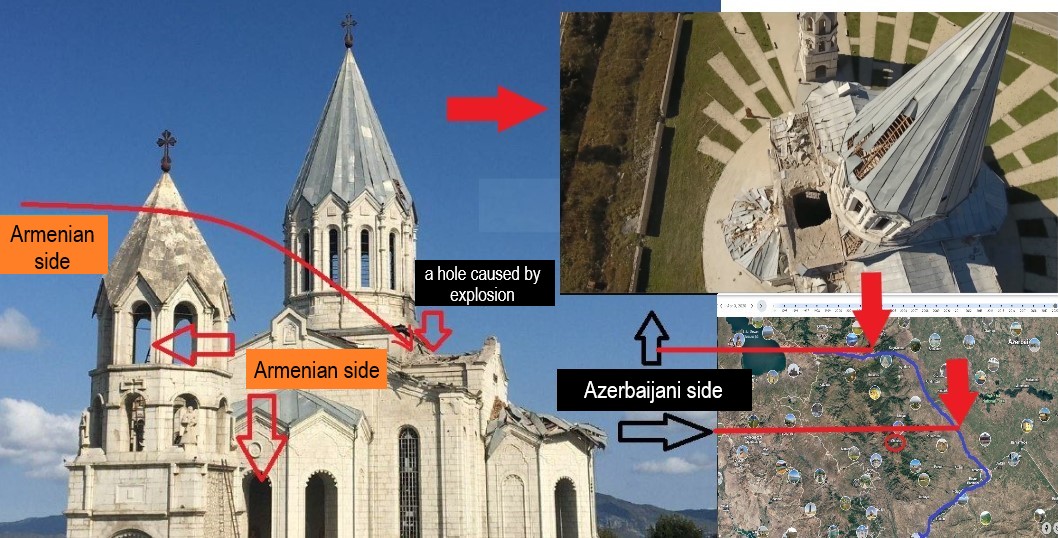
In the following frames, you will see evidence demonstrating that the fire did not originate from the Azerbaijani side.
This is an interior view of the so-called ‘damaged’ church.
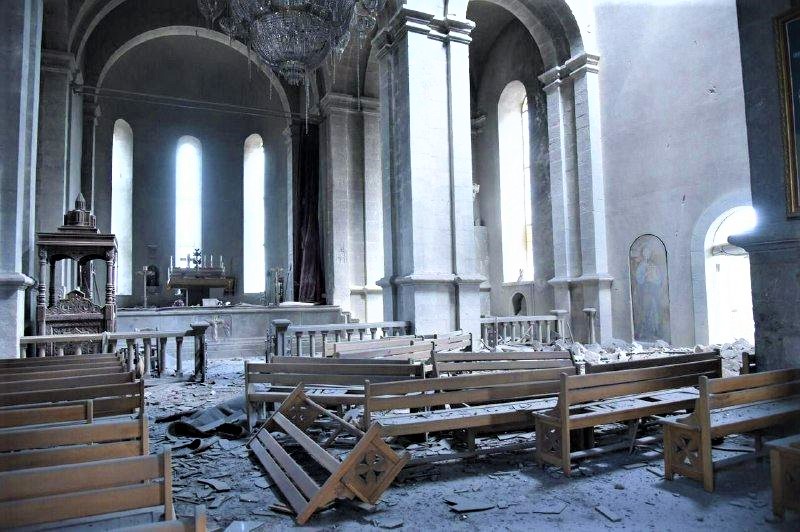
In this photo taken from inside the building, note the direction of the fire.
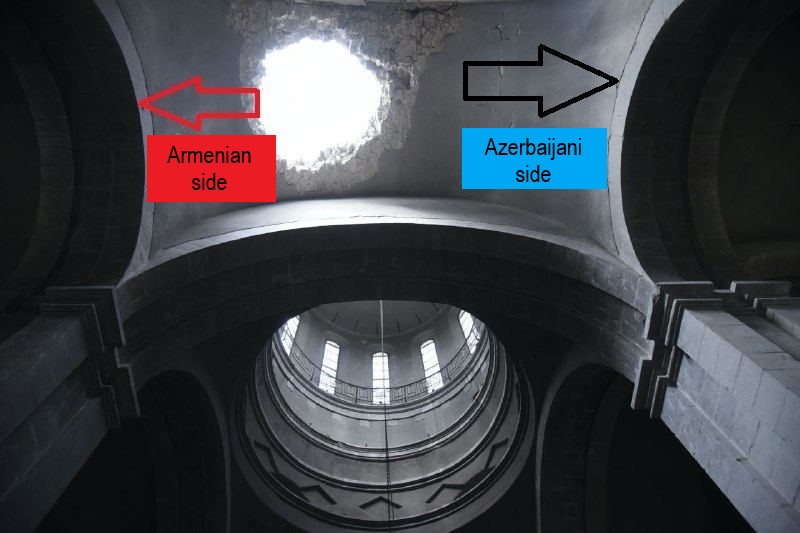
These, meanwhile, are the technical flaws made by those who staged the so-called “shelling of the church” scene.
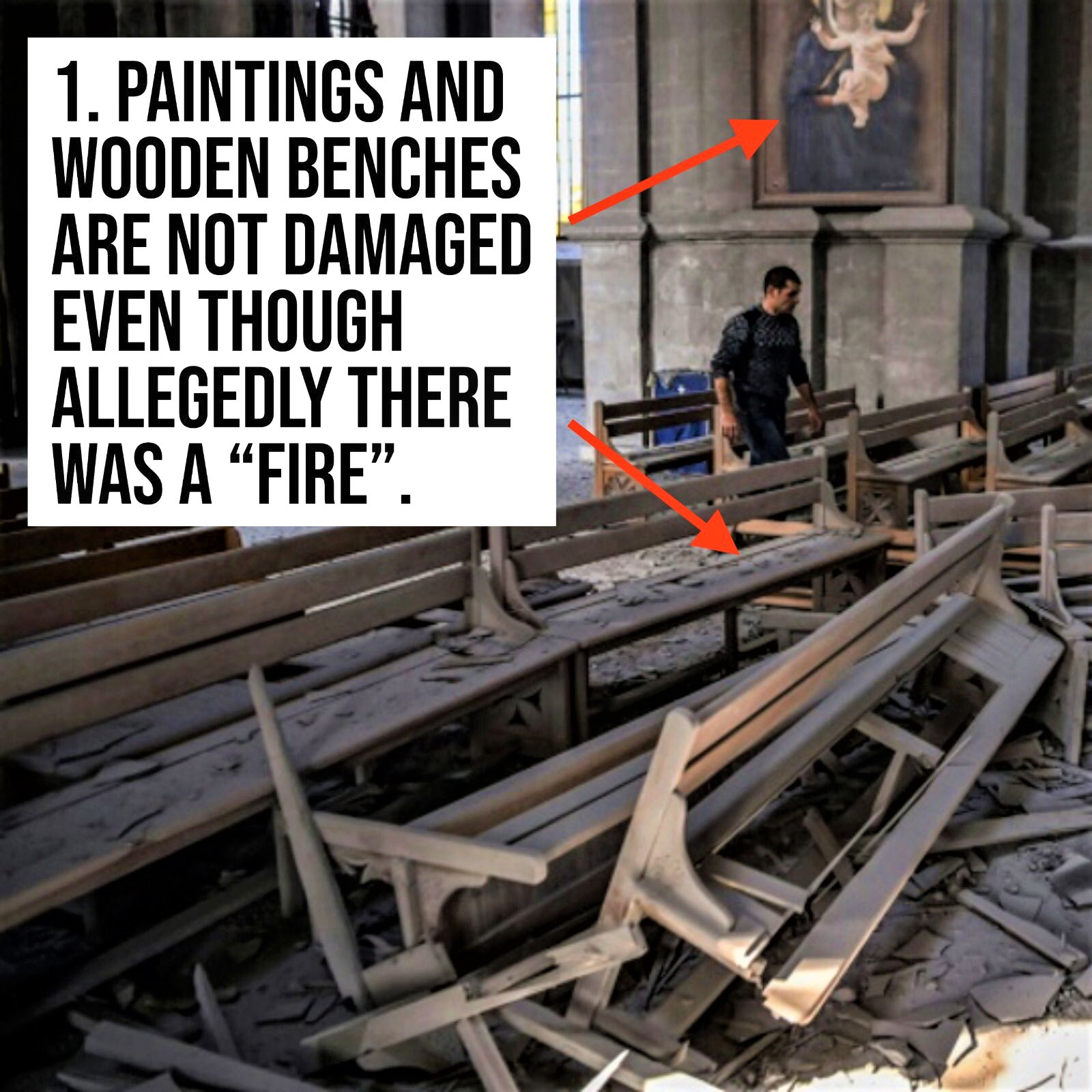
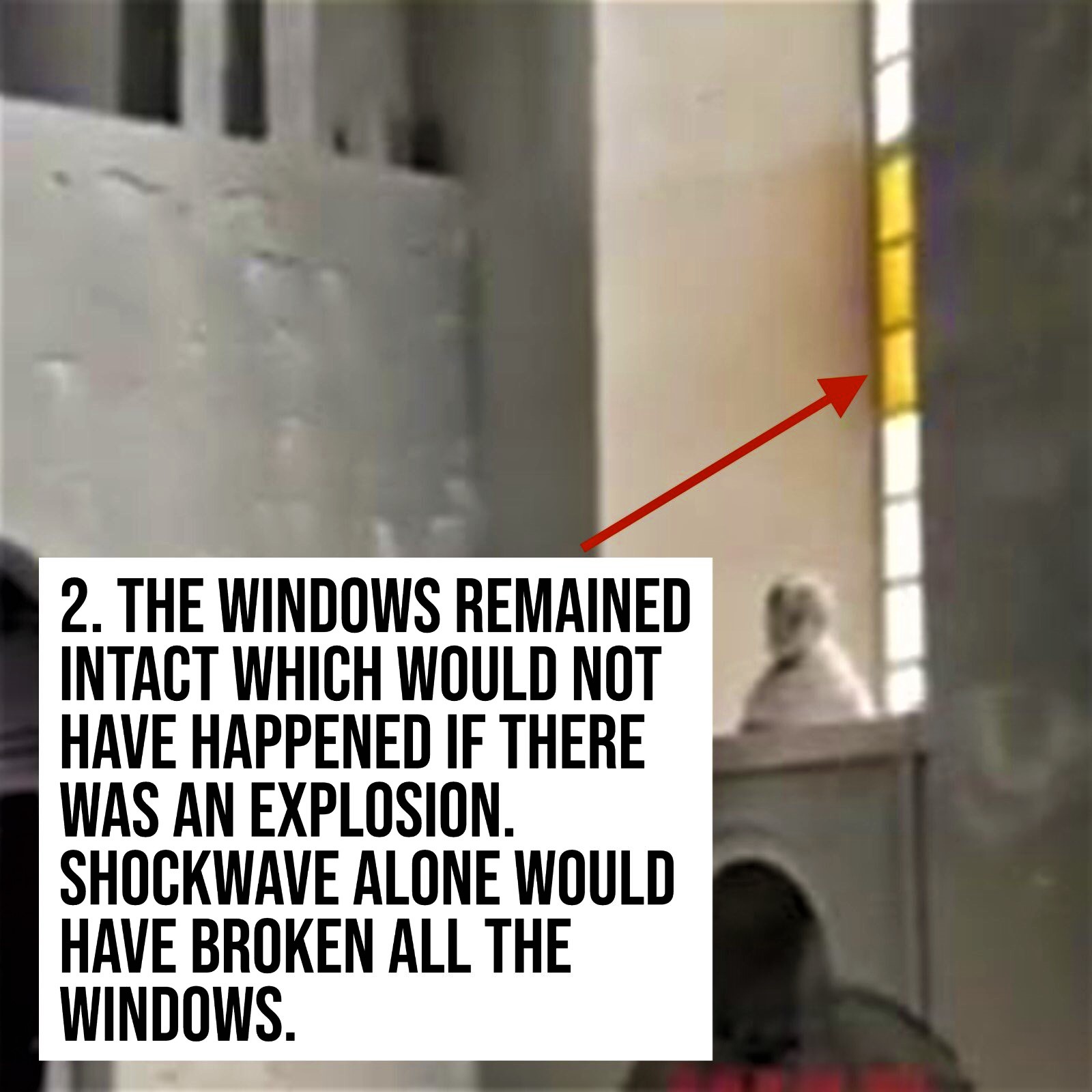
This footage - specifically, the recording of the so-called ‘bombing of the church’ - was filmed by the Armenians themselves. (link)
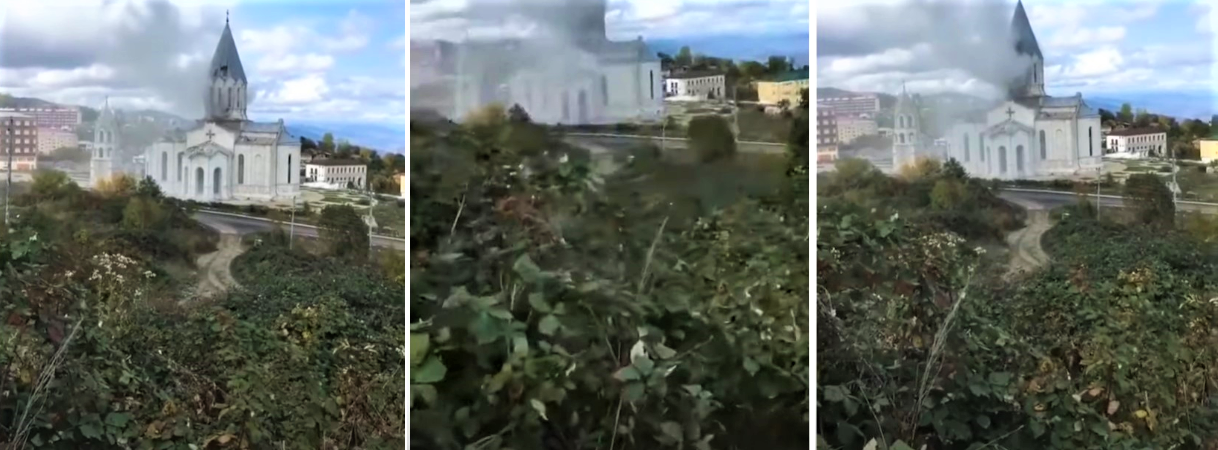
Don’t jump to conclusions. The footage we are about to present was also filmed by the Armenians themselves.
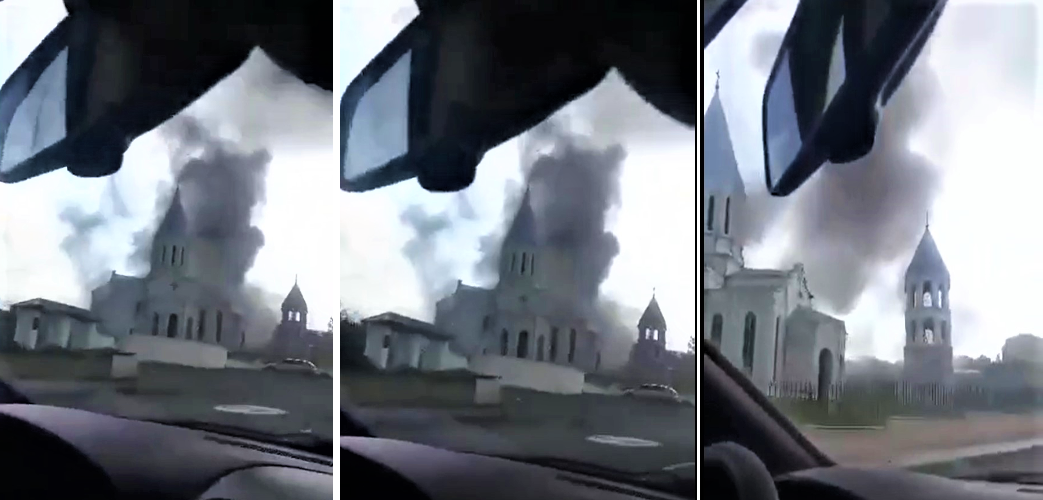
As the footage shows, the Azerbaijani side did not target the church itself but precisely aimed at the military asset situated behind it.
Therefore, we can conclude that the opening sentence and main photo of the article published in The Christian Post were based on false information.
Claim 1: The President of Global Christian Relief, D. Curry, asserts in the article that a young man named Vüsal was allegedly beaten and thrown down the stairs for bringing a Bible to school. This alleged treatment of a Christian high school student in Azerbaijan highlights the dangers faced by religious minorities in the country. He continues, “This incident reflects a broader pattern of religious intolerance and violence in Azerbaijan, where Christians are increasingly marginalized, attacked, and silenced.”
Our comment: The claims that a student named Vüsal brought a Bible to school and was beaten by fellow students are entirely fabricated, baseless, and false. No such incident has ever occurred in Azerbaijan’s educational institutions, including religious schools. Furthermore, no such information can be found on social media or any other digital platforms. The following are the results from a Google search in Azerbaijani, when searching for, “Student named Vusal who brought Bible to school.”
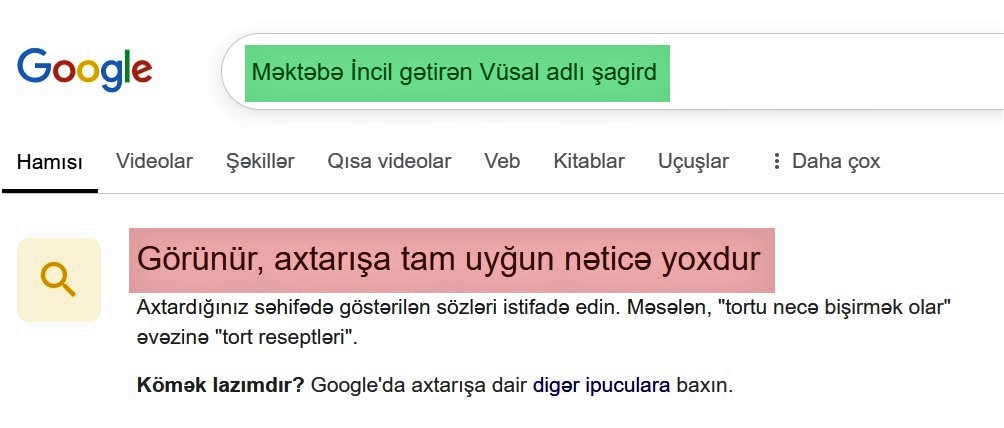
Same result is generated when searching for that “student” in Russian. No reputable media outlets, aside from Armenian media, have spread this false information.
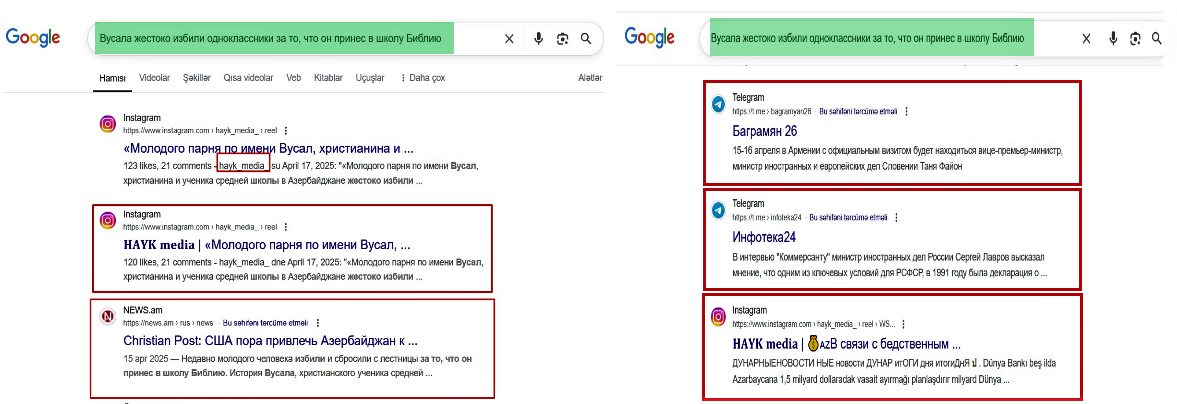
We unequivocally state that there is no fact, incident, or evidence to support the claims that Christians in Azerbaijan are subjected to attacks, pressured because of their ethnicity, face discrimination in various areas of governance or activity, or are suppressed due to their religious beliefs.
Hundreds of Christians and Jews are represented in the Azerbaijani Parliament, state and executive bodies, various institutions, and across the fields of science, education, healthcare, social affairs, culture, and the arts. These facts have been acknowledged by prominent figures of the Christian community, including archbishops of the Russian Orthodox Church. Moreover, in both the public and private sectors, as well as in entrepreneurship, countless Azerbaijani citizens of Christian faith are employed, holding a significant share of the workforce. (source)
Claim 2: Christian religious monuments in Karabakh are being subjected to mass destruction. Quote: “In 2023 alone, reports documented alarming levels of violence against Christians and other religious minorities. For example, satellite imagery revealed the destruction of Armenian Christian sites in Nagorno-Karabakh following Azerbaijan's military takeover of the region. Churches, cemeteries, and schools were deliberately damaged or destroyed, underscoring the regime's systematic targeting of religious heritage.”
Our comment: Let us first note that David Curry, who is globally presented as a staunch Christian advocate and ‘a leading voice on rising persecution against Christians,’ has been involved in monitoring global religious freedom conditions in the U.S. Congress and has served as a commissioner on the United States Commission on International Religious Freedom (USCIRF).
In its reports, USCIRF has demonstrated clear bias by including baseless, false, and slanderous claims about Islamic countries, including Azerbaijan. While turning a blind eye to the severe acts of vandalism committed by Armenians against Azerbaijani religious monuments, it has sought to construct a deceptive and hypocritical narrative portraying the aggressor as allegedly facing religious persecution.
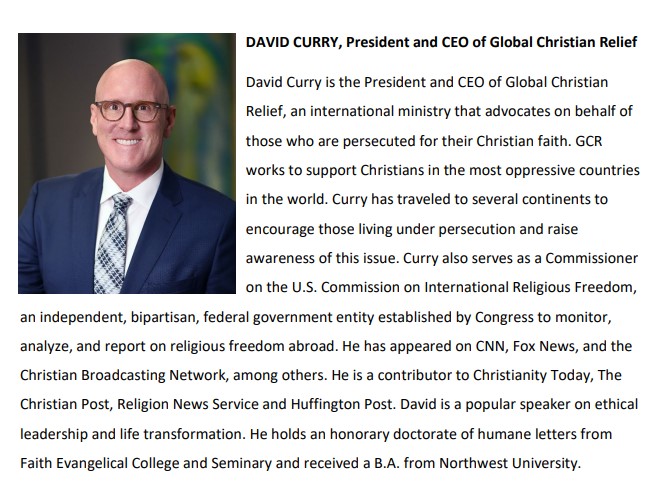
The targeting of Azerbaijan in The Christian Post by David Curry - a promoter of religious extremism who openly displays hostility and hatred toward Islam - and his fabrication of absurd and unfounded claims once again fully exposes his anti-Islamic stance.
The claims made by The Christian Post regarding the mass destruction of religious monuments in Karabakh are likewise openly biased and far from the truth. On the contrary, following the liberation of its lands after more than 30 years of Armenian occupation, the Azerbaijani government launched the project ‘Let’s Get to Know Our Christian Heritage,’ initiating the state-supported restoration and repair of Christian religious sites, churches, and places of worship. (link)
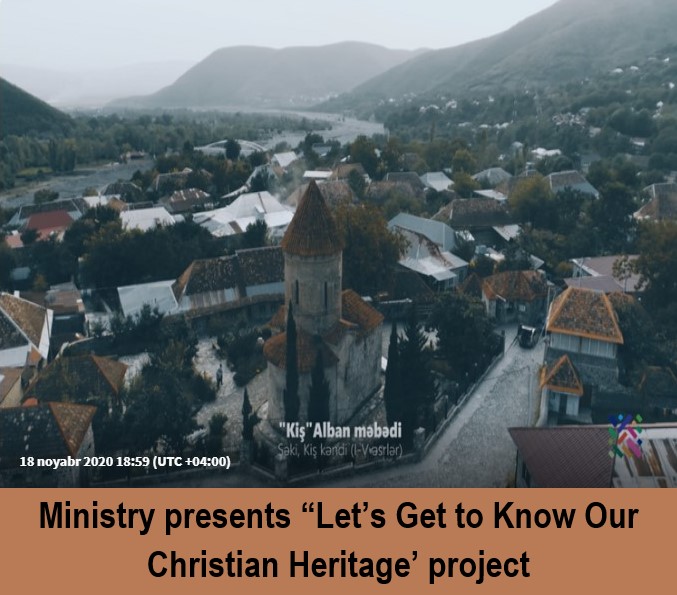
During its visit to Karabakh on October 1, 2023, the UN mission led by Vladanka Andreeva, the UN Resident Coordinator in Azerbaijan, officially recorded that no damage had been inflicted on civilian public infrastructure, cultural or religious structures in the region, including in Khankendi, the largest area formerly densely populated by Armenians. This finding was reflected in the official UN statement. (link)
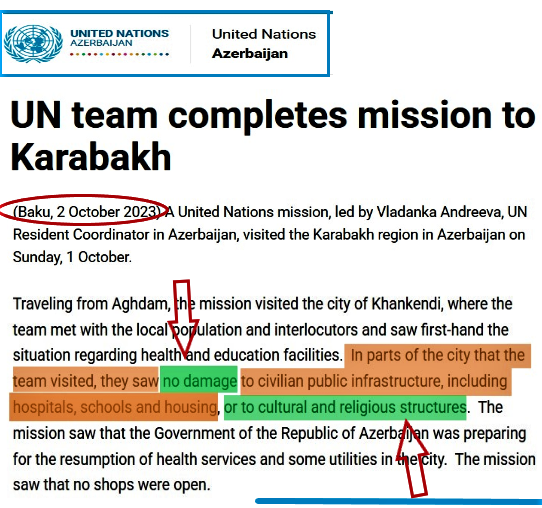
Members of the foreign diplomatic corps who visited Karabakh have witnessed firsthand the acts of brutality committed by Armenians.
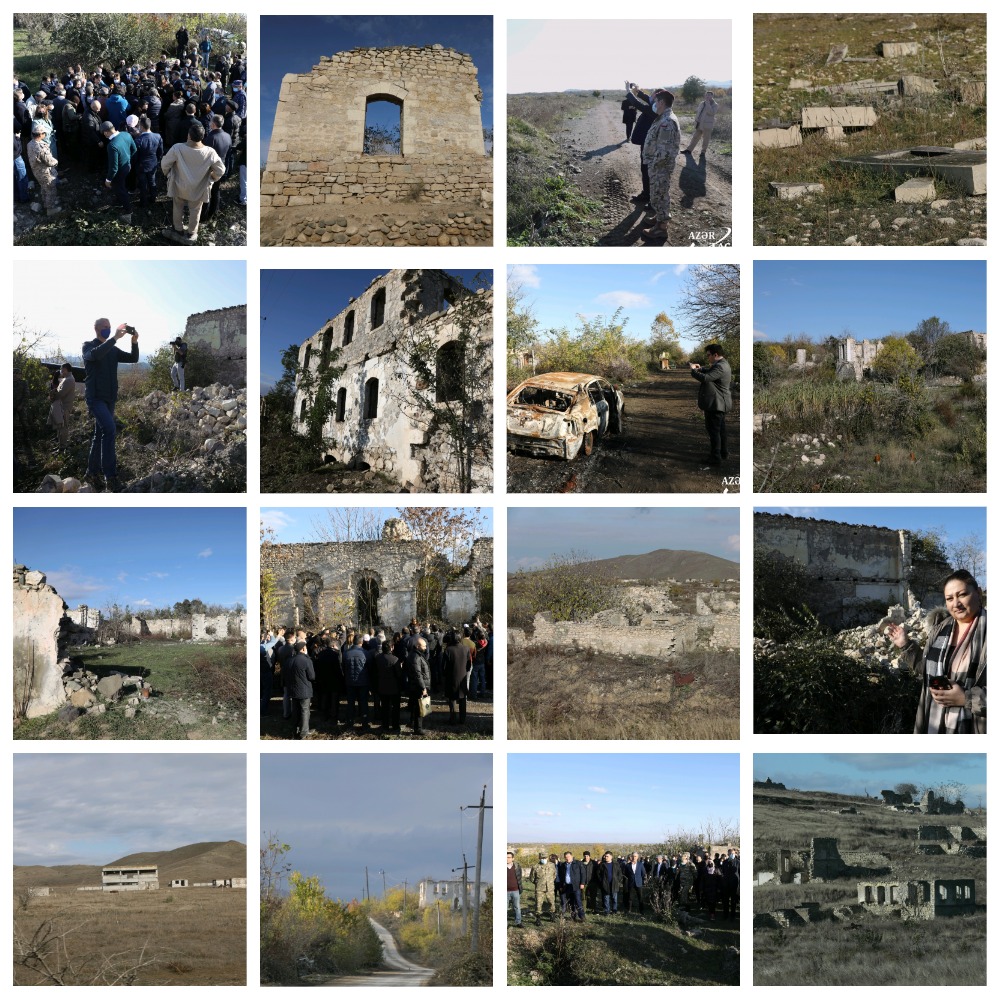
The facts recorded by foreign visitors also confirm that Azerbaijan did not destroy Christian Armenian religious monuments; on the contrary, religious sites belonging to Azerbaijan were devastated. In the territories once occupied by Armenia, a total of 403 religious monuments — including 67 mosques, 144 temples, and 192 shrines — were destroyed and obliterated. Christian monuments in this area were falsified, and temples belonging to Caucasian Albania were Armenianized and converted into Gregorian sites. (link)
The names of the Khudavang and Ganjasar temples, the Orthodox churches in Khojavend, and the Aghoghlan Monastery in the Lachin district were altered and Armenianized. (link)

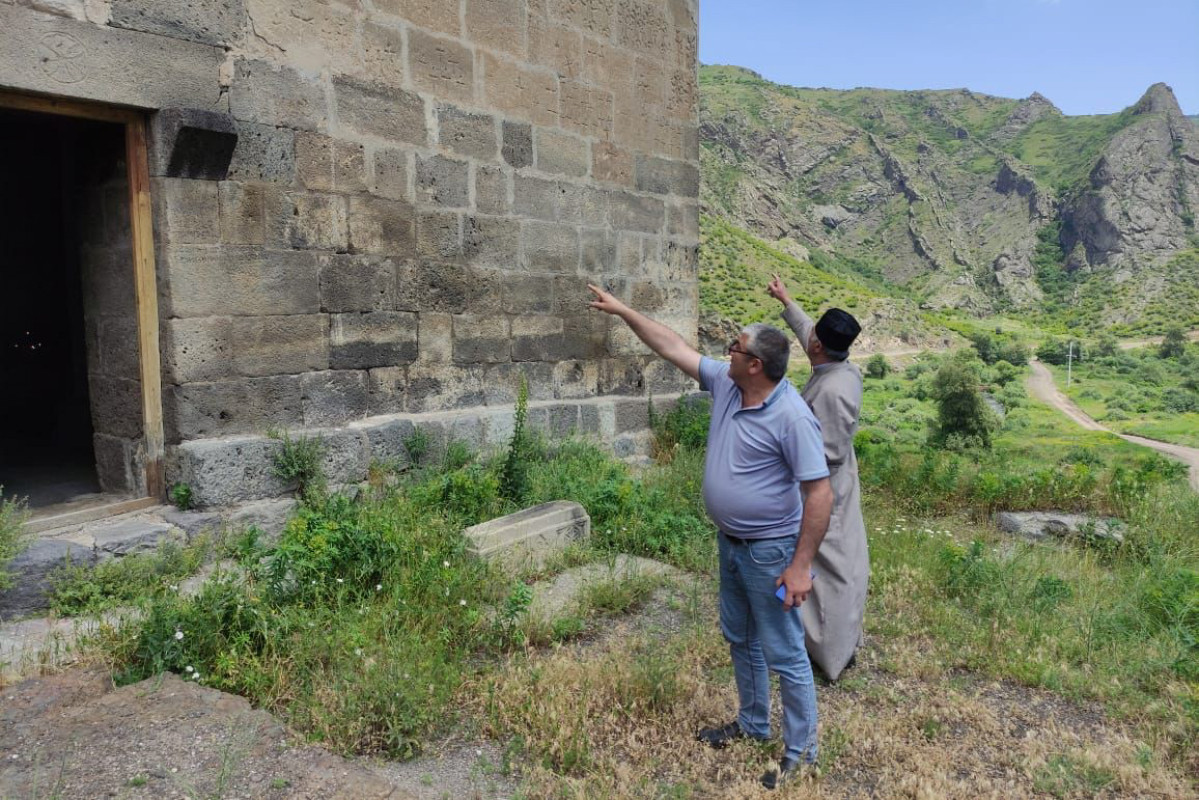
Upon visiting the Alban temples in the territories liberated in 2022, the Azerbaijani Alban-Udi Christian community issued a statement condemning the Armenian vandalism, declaring that a significant portion of the historic Alban temples in Karabakh had been transformed into Gregorian sites. They also reported that archival materials and documents had been falsified. (link)
This brutality by the Armenians was documented by Western photojournalists and presented to the international community. (link)
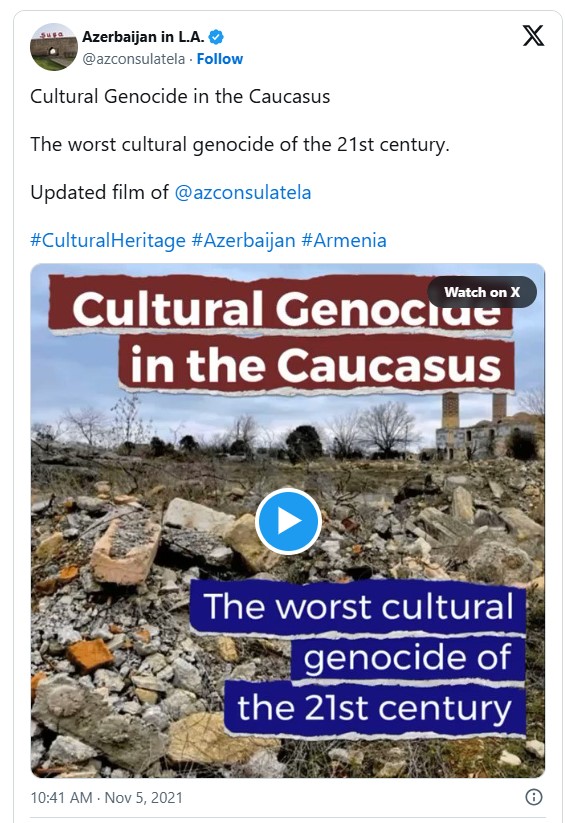
The truth cannot be concealed — hundreds, even thousands, of material proofs and historical pieces of evidence are available. In the report prepared by Azerbaijan’s Ministry of Foreign Affairs, Armenia’s acts of vandalism against our historical and religious monuments have been documented and classified with solid photographic, video, and documentary evidence.

The falsifications by the Armenians - their lies about the alleged destruction of historical monuments by Azerbaijan in the territories they once occupied - have been exposed one by one with concrete facts. When retreating from the Azerbaijani villages they had occupied, including the Khudavang Monastery in Kalbajar, the Armenians themselves destroyed these historical monuments and then sought to place the blame for this vandalism on Azerbaijan. (link)
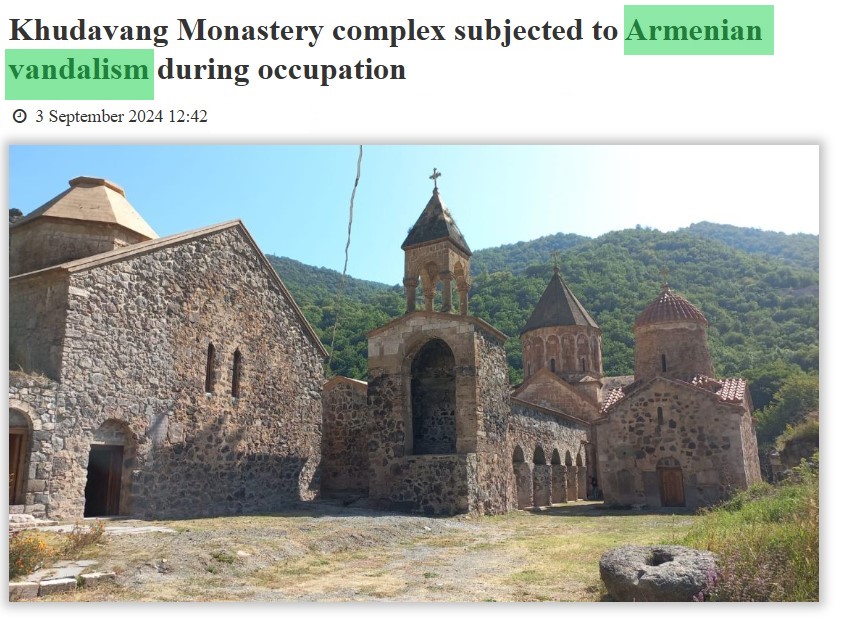
It is worth noting that in 2021, the U.S. Department of State itself, in its Report on Global Religious Freedom, acknowledged the acts of vandalism committed by Armenians during the occupation of Azerbaijani territories. The report states that Armenia systematically destroyed and looted cultural and historical monuments in these territories and attempted to alter their cultural heritage. The report notes that, based on photo evidence and solid documentation provided by diplomats, civil society representatives, and journalists who visited the liberated territories, the looting and vandalism of hundreds of religious heritage sites — including numerous mosques, shrines, and cemeteries belonging to approximately 400,000 Azerbaijanis - during the period under Armenian control has been documented.

It becomes clear that the information presented in the article written by David Curry in The Christian Post is not based on his own research and analysis, but rather relies on sources close to the Armenian lobby, such as Caucasus Heritage Watch and Freedom House, as well as ‘evidence’ from Horizonweekly and Sputnik Armenia.
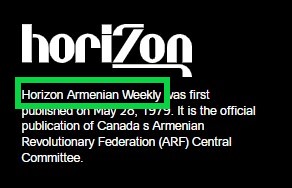
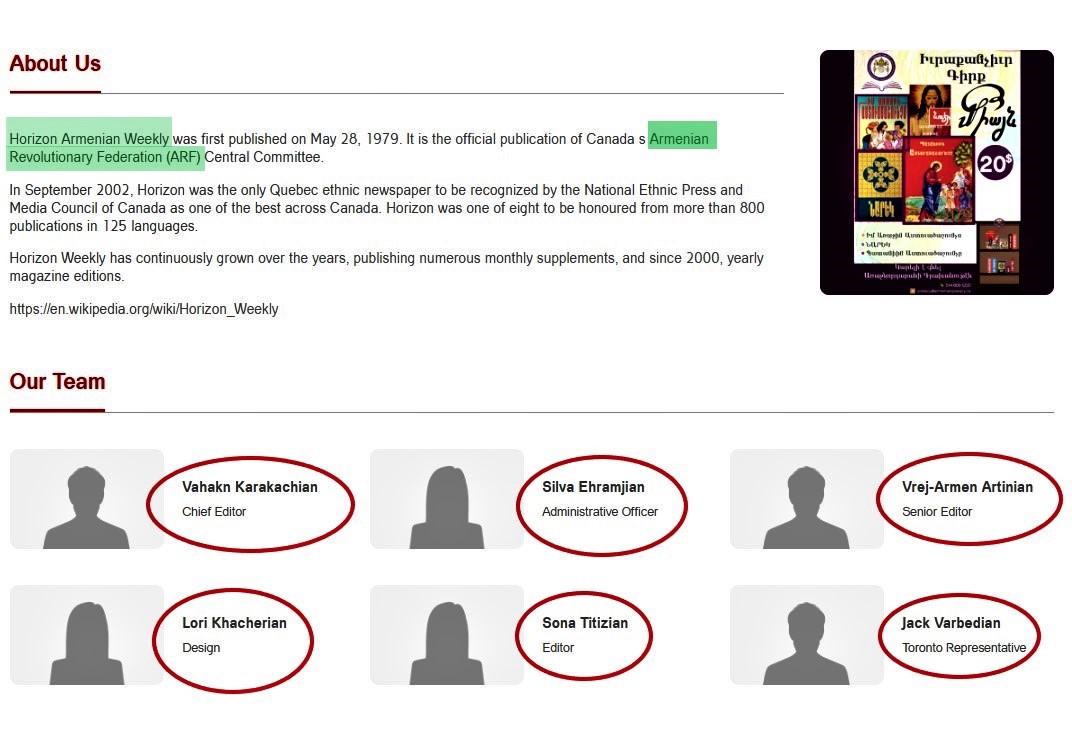
All of this points to the fact that he and the organization he represents are blatantly acting as puppets in the hands of the Armenian lobby. Including defamatory media content from an anti-Azerbaijani publication owned by an Armenian magnate as fact or argument in the article undermines objectivity and is seen as serving the interests of the Armenian lobby. It is hypocritical to rely on the false claims of Caucasus Heritage Watch, which has consistently overlooked Armenia's crimes against Azerbaijan's material and cultural heritage during more than 30 years of occupation, and Freedom House, a propaganda tool of American Armenians, whose vice president is married to an ethnic Armenian, particularly when a majority of experts in both organizations are of ethnic Armenian origin.
If the destroyed Armenian religious monuments are being referenced, we also have a response to that.
Fact 1: Azerbaijanis are accused of destroying the 50-meter cross monument near Khankendi.
It should be noted that this issue was first raised during hearings at the International Court of Justice in connection with claims filed by Armenia against Azerbaijan. Linos-Alexandre Sicilianos, representing Armenia, asserted that international conventions safeguard cultural heritage. However, despite these protections, Azerbaijan is accused of destroying the Armenian Christian cross monument near Khankendi.

Upon investigation, it becomes evident that in May 2017, a 50-meter-high 'iron cross' was erected on one of the hills in the village of Dashkand (known as Dashushen by Armenians) in the Shusha district, near Khankendi. The Armenians promoted this 'iron structure,' which they claimed was erected in honor of Armenian terrorists killed in Karabakh, as the second tallest 'cross monument' in Europe.
It turns out that Armenia's claim at the International Court of Justice regarding the 'removal of the Armenian Christian cross' erected near Khankendi is based on speculation. The iron structure in the shape of a 'cross' was not a monument, but rather a transmission antenna belonging to 'Karabakh Telecom,' which was operating illegally in Azerbaijani territory.
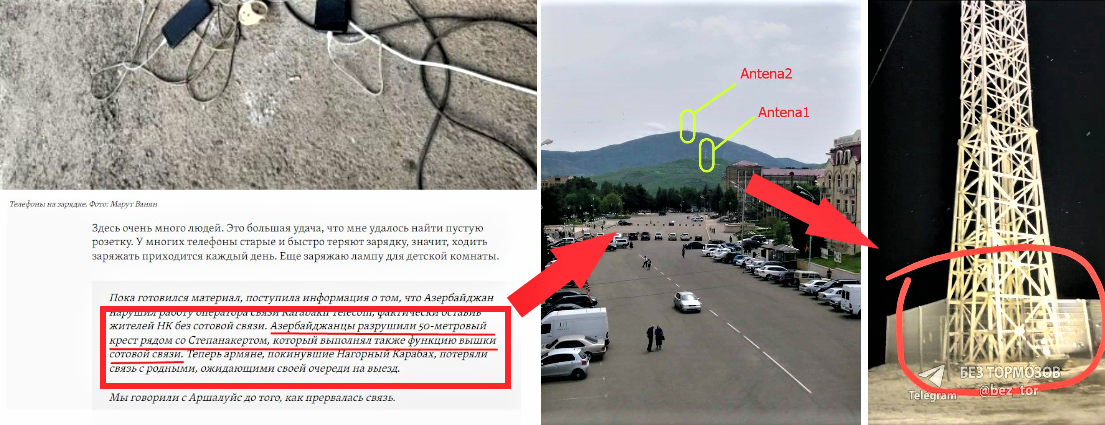
Fact 2. If the issue refers to the dismantling of the ‘Holy Ascension Church’ in Lachin, the author once again clearly demonstrates bias and engages in information manipulation.
For context, the Armed Forces of Armenia occupied Lachin District - an ancient Azerbaijani city - on May 18, 1992, just ten days after the occupation of Shusha. They killed civilians and carried out ethnic cleansing. In 1998, Armenians dismantled the house belonging to Lachin resident Qubad Ibrahimov, who had been expelled from his home, and used its materials to build the so-called church. Attached photo evidence includes copies of official documents issued to Gubad Ibrahimov by Azerbaijani local authorities in 1988, as well as photos confirming the construction activities carried out by Armenians.
Below is a copy of the documents issued to Gubad Ibrahimov:
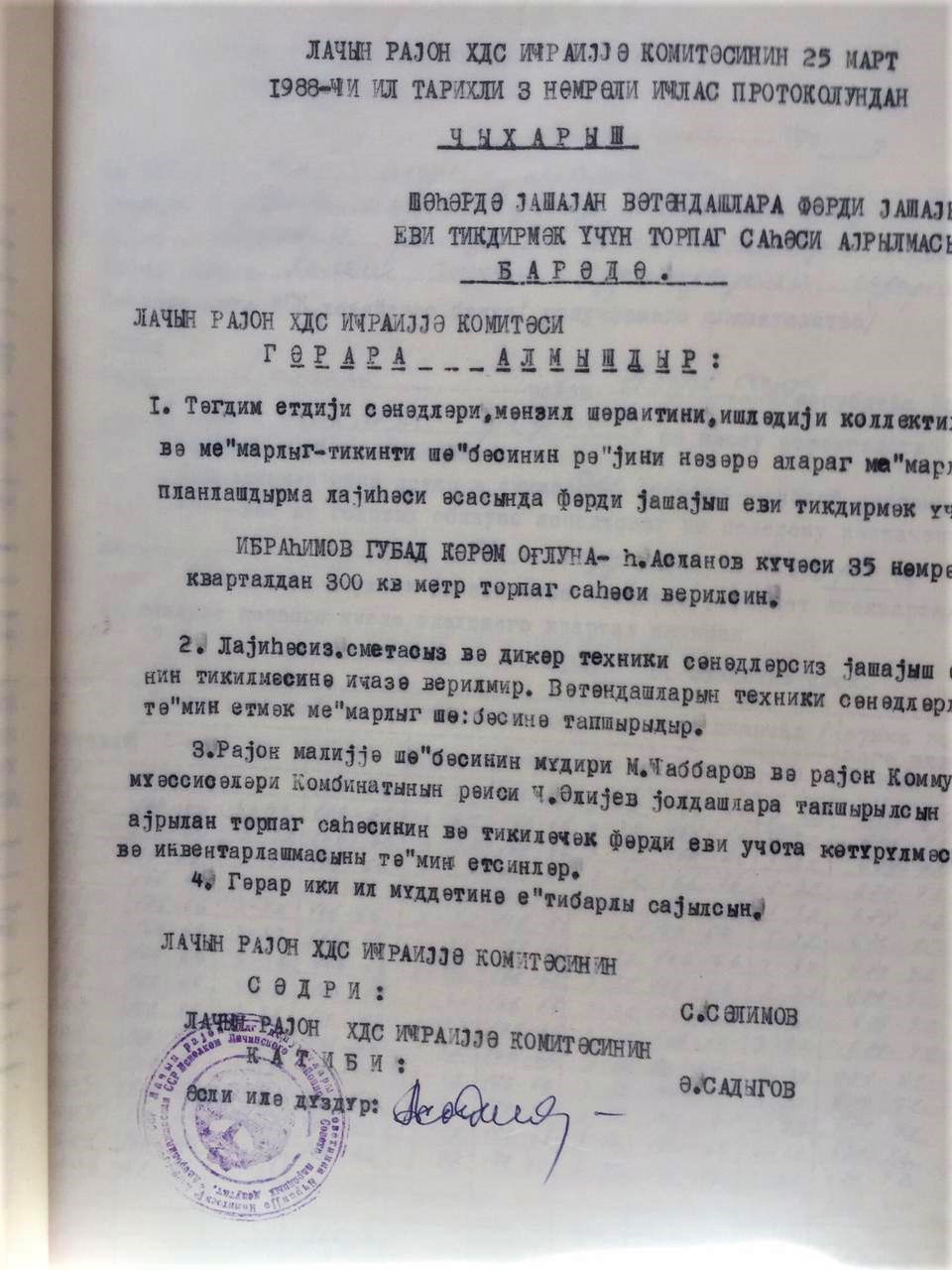
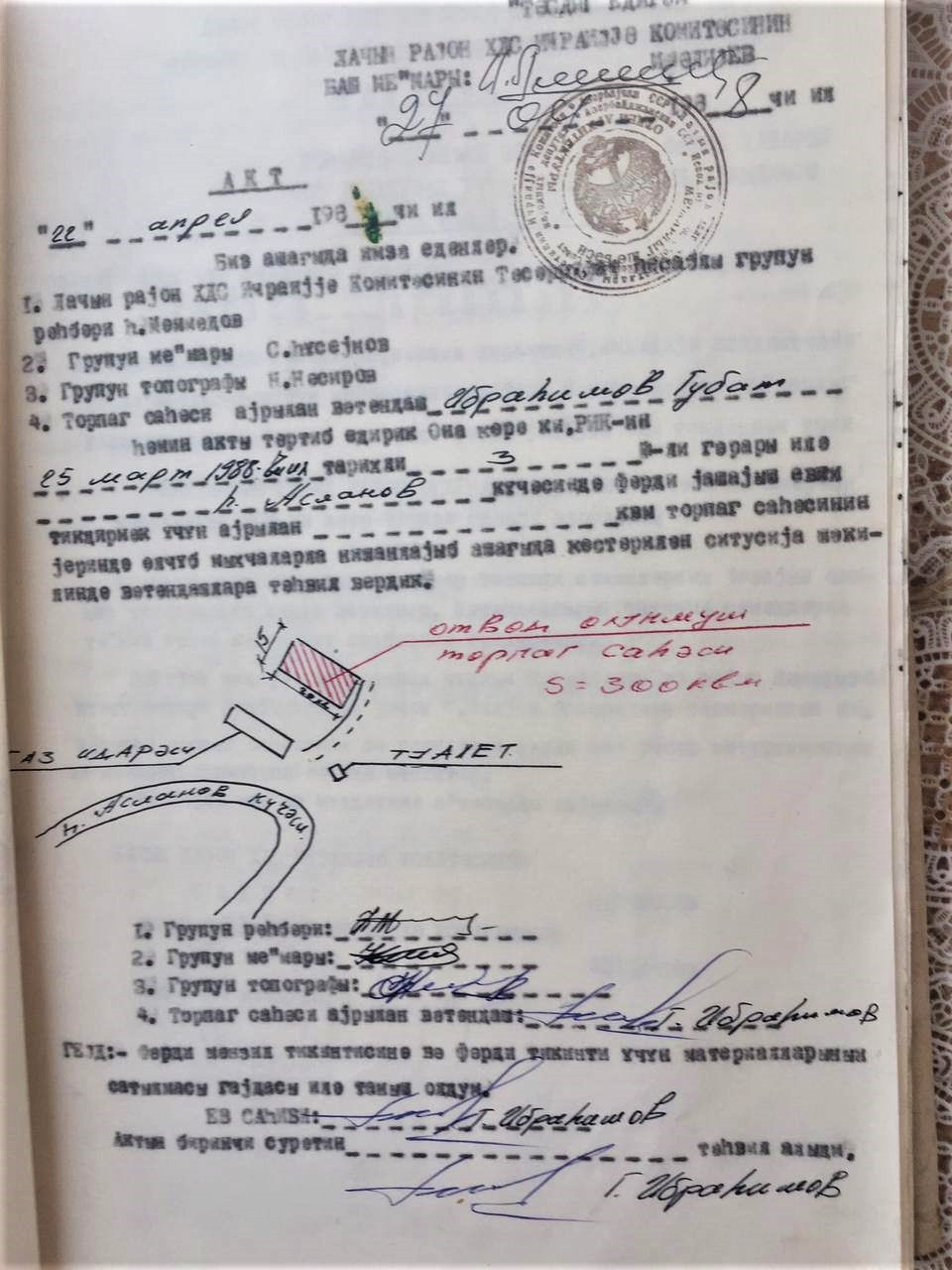
Here is a photograph of the site where the planned was to be built:
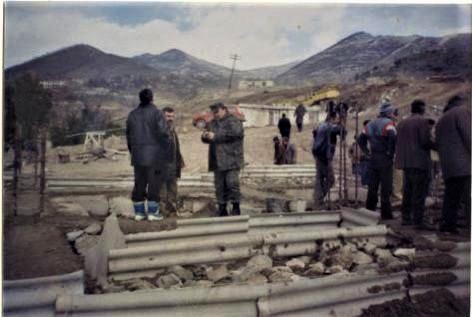
This is a photograph of the church built in place of the residential house:

As the facts show, the church built in Lachin has a 26-year history. It represents a violation of the property rights of an individual displaced from their homeland, with illegal construction occurring on the land, regardless of its intended purpose.
Third Claim: The article states that in May 2024, the United States Commission on International Religious Freedom (USCIRF) included Azerbaijan in its list of “countries of particular concern.” It also references certain excerpts from the Commission's biased report on Azerbaijan.
Our comment: Indeed, the U.S. Department of State's report has placed Azerbaijan on the special list of countries (Under Special Watch) where serious violations of religious freedoms are reported. The report is titled 'State Control of Religion in Azerbaijan' and is divided into sections, including “Respect for Religious Freedom,” “Legislative Limits on Religious Freedom,” “Religious Sites in Nagorno-Karabakh,” and “Pressures on Shi’a Muslims.”
However, there is an important point we believe should be noted. The section of the report pertaining to Azerbaijan was prepared by Danielle Saroyan Ashbahian, Chief of Public and Congressional Relations at the U.S. Commission on International Religious Freedom. She has also worked at the U.S. Consulates in Los Angeles and San Francisco, as well as in Lebanon.
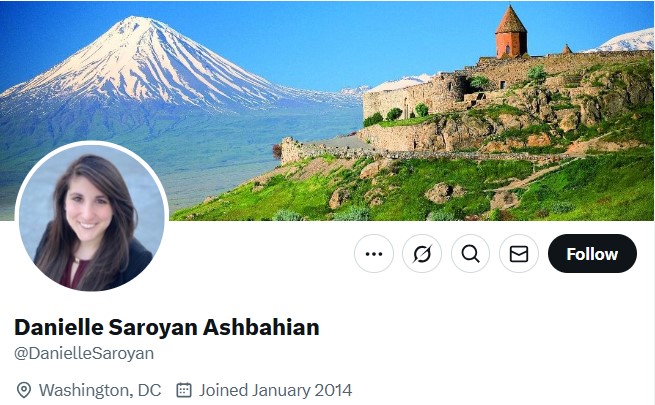
The Lebanese-born Armenian, madame Ashbahian, has been one of the leading figures of the Armenian Assembly of America (AAA), an organization that has consistently been hostile towards Azerbaijan. Danielle Ashbahian, who holds a degree in diplomacy from the University of Southern California and specializes in European and French law, played a prominent role in promoting the so-called "Armenian Genocide". After being appointed Communications Director at the “AAA”, she exerted significant efforts in managing print and digital cosmmunications, promoting hostility and hatred against Azerbaijan and Türkiye. She played a direct and crucial role in the creation of the "armenia360" website, which fosters these sentiments, while also strengthening connections with international public institutions and foundations to spread the propaganda of a fabricated Armenian history.
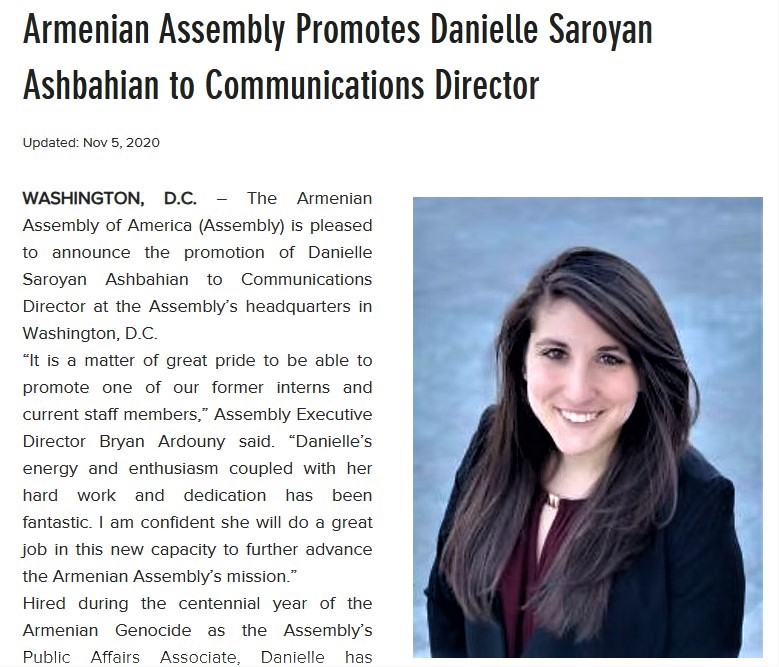
She is an active member of the St. Mary Armenian Apostolic Church in Washington and frequently advocates for Armenian religious monuments, often speaking on international platforms in their support. Given this background, it is surprising that she was involved in preparing the section on Azerbaijan for the U.S. religious freedom report, particularly on the sensitive issue of the "destruction of Armenian religious heritage" in Nagorno-Karabakh. The involvement of someone with such strong anti-Turkish views in compiling objective materials about Azerbaijan raises significant doubts.
Her close connections with U.S. Senators who have actively worked against Azerbaijan and Türkiye - including co-authors of the resolution on the so-called Armenian Genocide, such as Frank Pallone, Gus Bilirakis, Ted Cruz, Bob Menendez, Jessica Speier, Adam Schiff, Katherine Clark, and others - further highlight her anti-Azerbaijan stance.
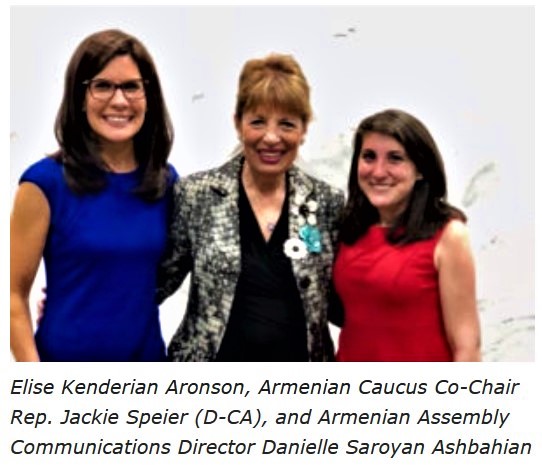
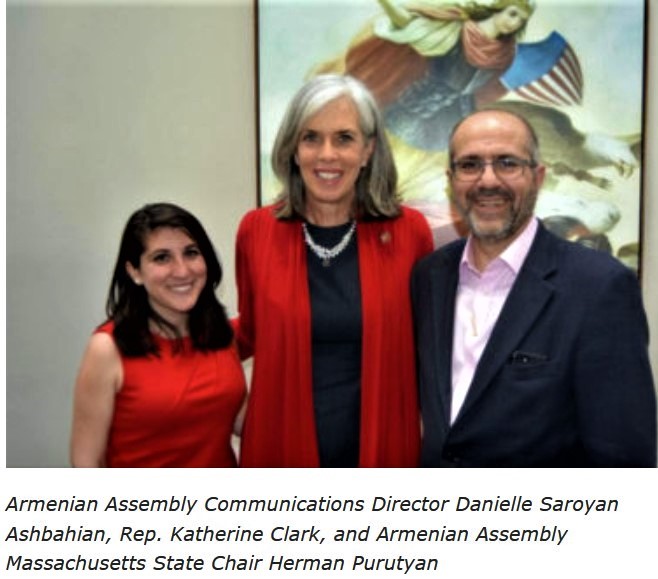
There are hundreds of facts that could demonstrate Ashbahian consistent vindictiveness and hostility towards Azerbaijan, but we do not feel the need to list them all. The issue is that it was a clear violation of the law to entrust such an important document to someone like D. Ashbahian, who has clear biases and personal interests. This is further confirmed by the opinion of the "Foreign Influence laws," which state that the involvement of someone working for a foreign country in shaping the foreign policy of the U.S. State Department constitutes a direct violation of the law.
It seems that, for this very reason, D. Ashbahian's name has since been removed from the list of the Commission's staff.
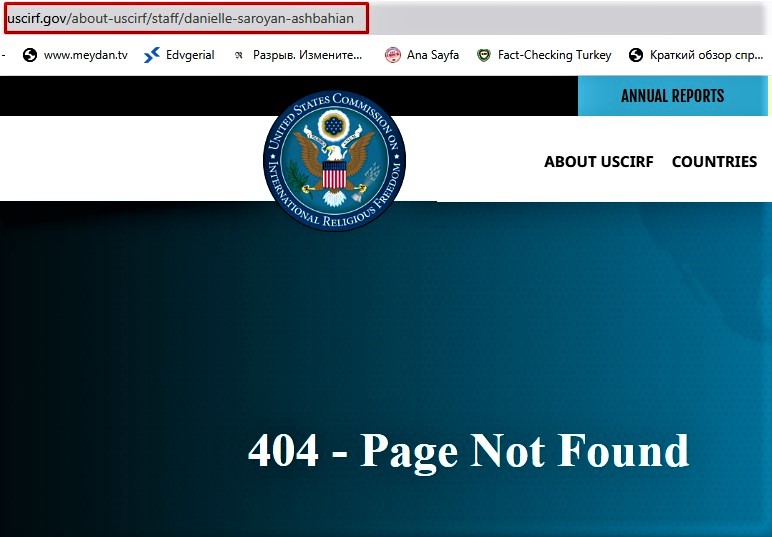
It should be noted that David Curry's tenure as a commissioner of the Commission also ended after the preparation of the notorious report against Azerbaijan:
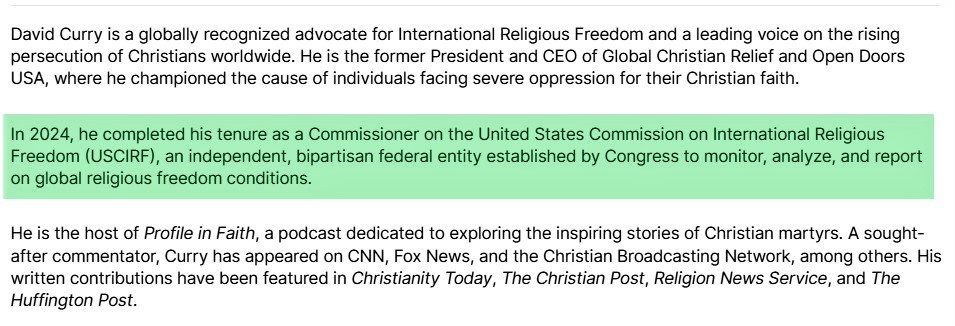
Fourth Claim: The article claims that in 2024–2025, there was an increase in pressure against Christians, including the demolition of Christian monuments and the forced displacement of Christians. It also states that Shia Muslims and the Jehovah's Witness community faced persecution.
Our Comment: It appears the author is still influenced by the false narratives circulated by the Armenian lobby in 2023, continuing to portray the departure of Armenians from Azerbaijan's Nagorno-Karabakh region as a case of "ethnic cleansing." The author seems to believe this voluntary migration can still be manipulated in that way. We firmly assert that over the past two years, neither Christians nor members of other faiths and ethnic groups have left Azerbaijan in any significant numbers. Although the author claims seven such incidents, these assertions are made irresponsibly, with no concrete documents or evidence to substantiate them.
First, let's clarify the facts regarding Shia Muslims and Jehovah's Witnesses, and then we will address the state's treatment of other religious groups.
The issue that the author seeks to provoke division with is the supposed persecution of Shia Muslims. We categorically state that the point raised by David Karri is drawn from the U.S. Religious Freedom Commission’s report. This report mentions the arrests and legal actions against members of the Muslim Brotherhood Movement. However, as the report clearly states, these arrests had nothing to do with religious beliefs or freedom of conscience. The individuals involved were arrested based on solid evidence, charged with espionage, and accused of attempting terrorism in a neighboring country. Their detention followed a judicial process and legal decision.
Furthermore, the individuals mentioned in the report, specifically Agali Yahyayev, Ehsen Nuruzade, and others, were not arrested due to their religion or freedom of conscience. Rather, they were detained on specific charges, including drug trafficking. Their arrests were based on substantial evidence and judicial decisions, and have no connection to any matters concerning religious or conscience freedom.
As for the Jehovah’s Witnesses, the report released last year accused Azerbaijan of not allowing individuals from relevant movements to refuse military service on religious grounds. Specifically, the report criticized the punishment of Jehovah’s Witnesses members for refusing military service. In response, the Azerbaijani government has issued several clear statements. According to Azerbaijani legislation, there is no provision that grants the right to defer military service based on religious beliefs or convictions. According to Part I of Article 76 of the Constitution of the Republic of Azerbaijan, defending the homeland is the duty of every citizen. In line with Articles 3.1 and 3.2 of the "Law on Military Duty and Military Service," every male citizen who reaches the age of 18 and is deemed fit for military service based on his health condition is required to serve in the Azerbaijani Armed Forces or other armed formations established under Azerbaijani law, as outlined by this legislation.
1) The claims that Christians face discrimination in employment and social isolation are false. Christians living in all regions of Azerbaijan, including the capital city, Baku, have equal access to employment and work opportunities, with labor rights being fully protected. According to Article 8.0.4 of the "Employment Law," one of the state's primary responsibilities in the employment sector is to ensure equal opportunities for all individuals, regardless of their race, ethnic origin, religion, language, gender, or affiliation, in exercising their right to freely choose employment and work.
In the “Employment Strategy of the Republic of Azerbaijan for 2019–2030,” approved by Presidential Decree on October 30, 2018, specific measures are outlined (under the section addressing the current situation and development trends in the labor market) to strengthen the social protection of the unemployed and those facing difficulties in securing employment - regardless of race, ethnic origin, religion, or language. The strategy also emphasizes integrating these individuals into the labor market and involving them in active employment programs.
2) Within local Protestant communities, various religious educational centers operate to teach the fundamentals of Christianity and study the Bible — including “Alpha” courses, Saturday and Sunday schools, the “Bible College,” “Spiritual Ministry,” and “Praise Schools.” For example, the Jehovah’s Witnesses maintain two places of worship in the Qaradağ and Yasamal districts. This religious community has been provided with the necessary conditions to regularly hold regional gatherings, with law enforcement agencies ensuring their security.
Jews in Azerbaijan celebrate their national and religious holidays freely, and Jewish children receive their education as equal citizens of the country. (Fifth Periodic Report of the Government of the Republic of Azerbaijan under the Council of Europe’s “Framework Convention for the Protection of National Minorities,” pp. 26–27).
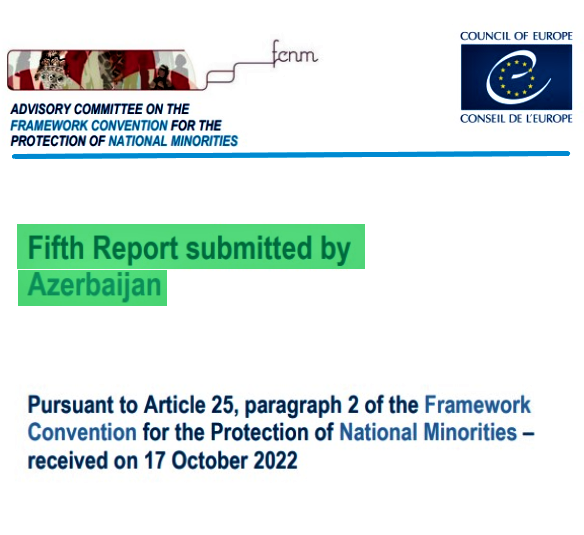
3) In Azerbaijan, where the vast majority of the population is Muslim, there is deep respect for all other religions, including Christianity, Judaism, and other faiths. Churches, monasteries, temples, synagogues, and other religious monuments are maintained and restored with support from the state.
The “Mikhail Archangel” Orthodox Church, a Christian place of worship, has been restored by the Azerbaijani state. On May 25, 2001, Patriarch Alexy II of Moscow and All Russia visited the church and led a prayer ceremony there. Similarly, the Cathedral of the Holy Myrrh-Bearing Women - also known as the “Zhen Mironosits” Orthodox Cathedral - is under state protection. Serving as the center of the Baku and Azerbaijan Diocese, it meets the religious needs of the country’s Orthodox Christian community. Notably, during the Bloody January events of 1990, two shells struck the church’s roof; restoration work was subsequently carried out, and during Patriarch Alexy II’s visit in May 2001, the church was declared a sacred site.
The Church of the "Immaculate Conception of the Virgin Mary" is open to all visitors as a sacred space for Christians. The church is home to a library filled with Orthodox literature, a Sunday school for children, and also runs a charity cafeteria.
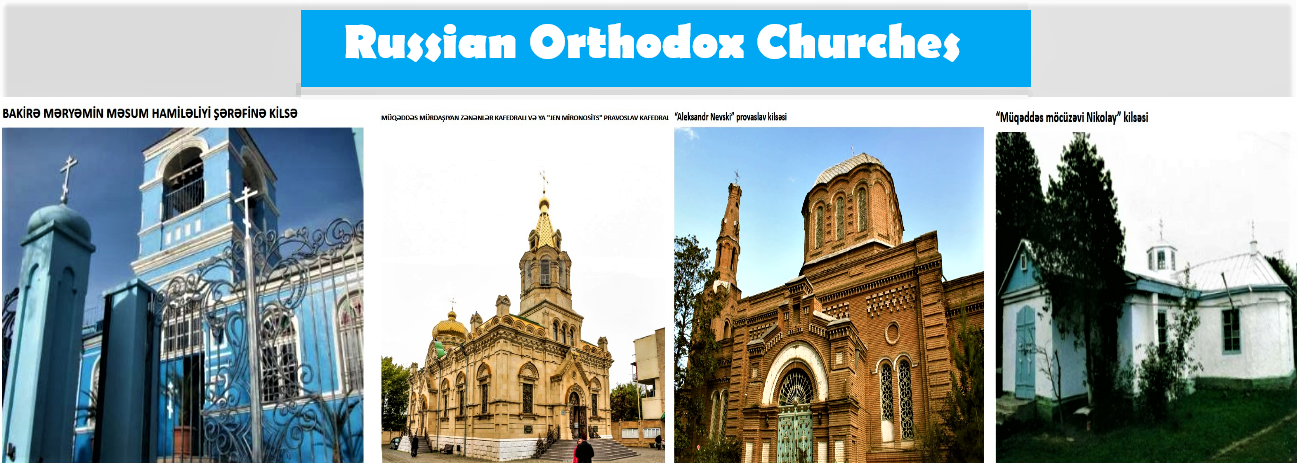
Just as there are Georgian churches in the country - the "Holy Miracle-working Nicholas" Church, Georgian Orthodox churches, the Holy George Church, the Holy Nino Church, the "Holy Trinity" Church (also known as the "Holy Sameba" Church), and the "Holy Michael Church" are all significant religious sites.
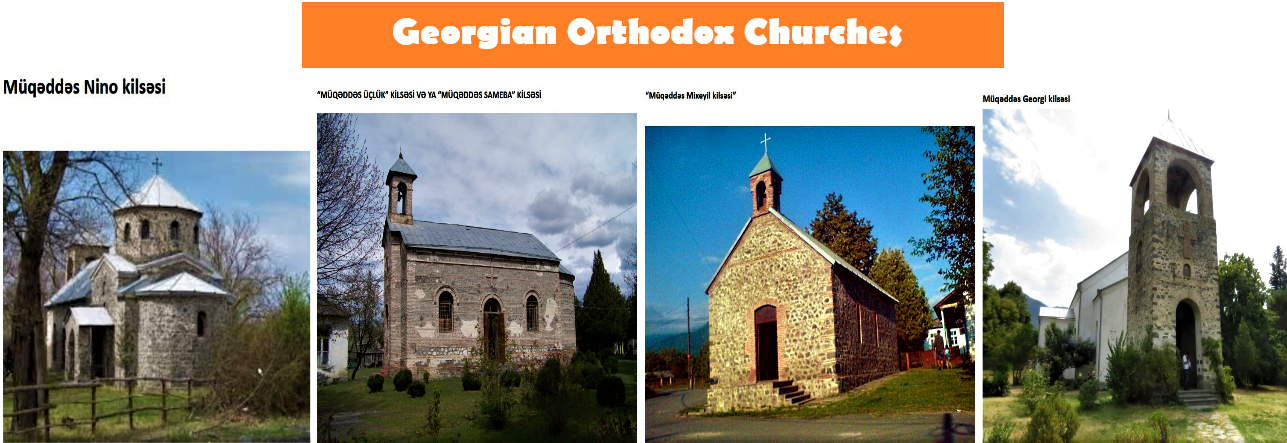
The Albanian-Udi churches, including the "Cotari" Church dedicated to Saint Elisha, the "Holy Virgin Mary" Albanian Church, and the "Kala" (Great) Church, also dedicated to Saint Elisha, are notable religious landmarks.
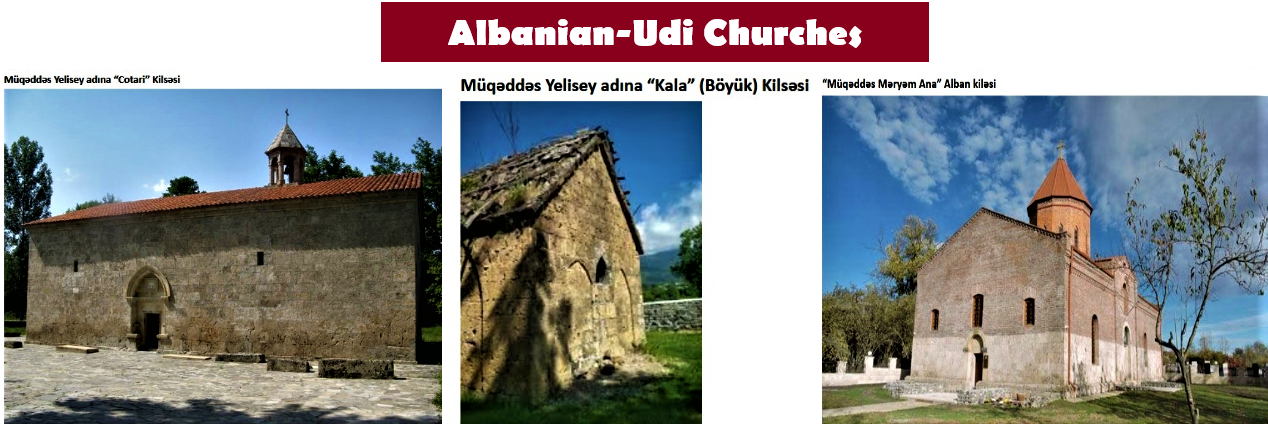
The Small Catholic Church of the "Intercessor Jesus Christ,” the Lutheran Church, and other religious establishments highlight the Azerbaijani state's respect for various religions.
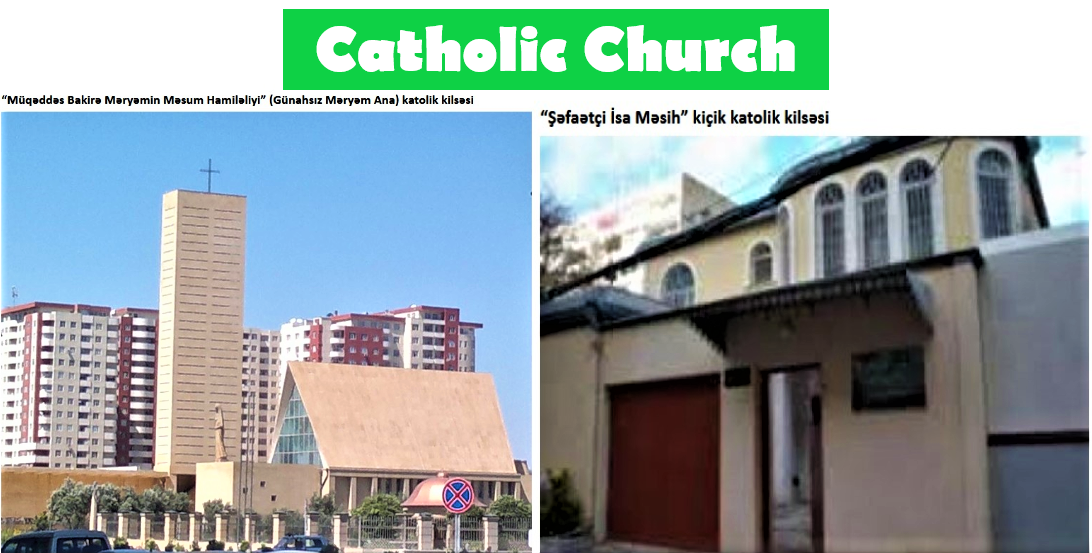
The Azerbaijani government consistently undertakes major renovations of these churches and religious monuments, allocates funds from the national budget to religious communities, and provides essential support to meet their needs.
An example of the country’s deep respect for Christian places of worship is the opening of the rebuilt main cathedral of the Russian Orthodox Church in Baku on March 24, 2003, with the direct participation of National Leader Heydar Aliyev.
Furthermore, the extensive renovation of the "Savior" Church (the German Lutheran Church in Baku), funded with 1 million manat following a decree signed by President Ilham Aliyev on March 15, 2010, and the president’s attendance at the church’s reopening in December of the same year, underscores the government’s dedication to preserving historic Christian religious sites.
The restoration of the Alexander Nevsky Russian Orthodox Church in Ganja in 2017 by government, coupled with the ongoing attention given to this religious monument, further demonstrates the Azerbaijani government’s respect for Christian heritage. A notable example of this commitment is the visit of First Vice President Mehriban Aliyeva, along with her daughters Leyla Aliyeva and Arzu Aliyeva, to the Alexander Nevsky Russian Orthodox Church in Ganja. This visit highlights the high regard for the Christian faith within the country.
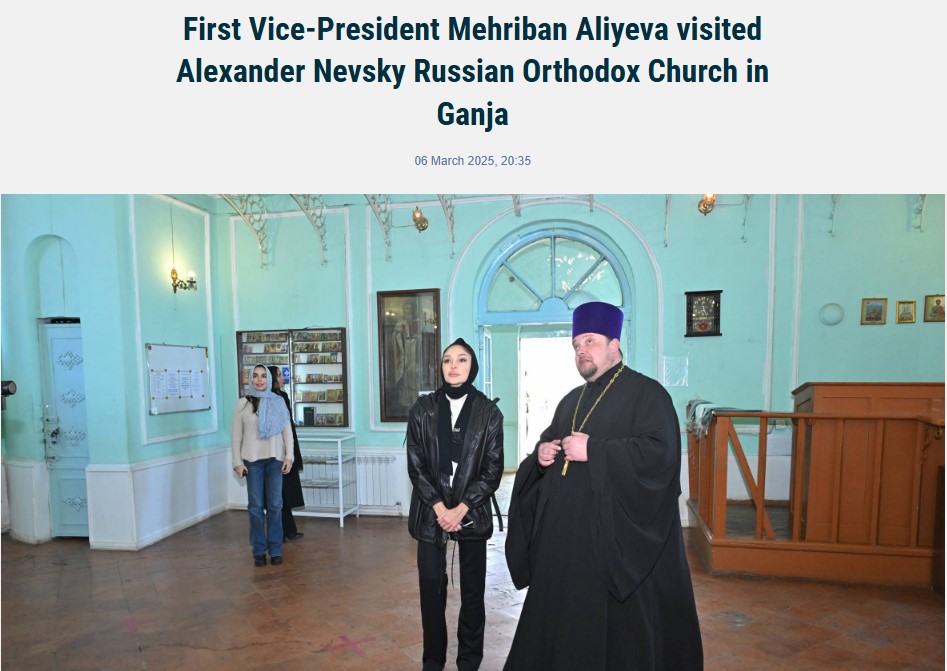
4)Azerbaijan has consistently demonstrated respect and care not only for religious monuments within its borders but also for those abroad. For instance, under the "Azerbaijan - the Address of Tolerance" project, the Heydar Aliyev Foundation has undertaken the restoration of religious and historical monuments outside Azerbaijan’s borders.
We can cite numerous examples demonstrating Azerbaijan’s and the Heydar Aliyev Foundation’s respect for and contributions to religious and cultural heritage, both domestically and internationally.
For instance:
– Restoration of the 14th-century glass windows of Strasbourg Cathedral, which depict scenes from the lives of the Virgin Mary and Jesus Christ;
– Financial support for restoring seven churches from the 10th–12th centuries in the towns of Saint-Hilaire, Fresnaye-au-Sauvage, Saint-Hilaire-la-Gérard, Tanville, Courgeoût, Réveillon, and Mâle in France’s Orne Department;
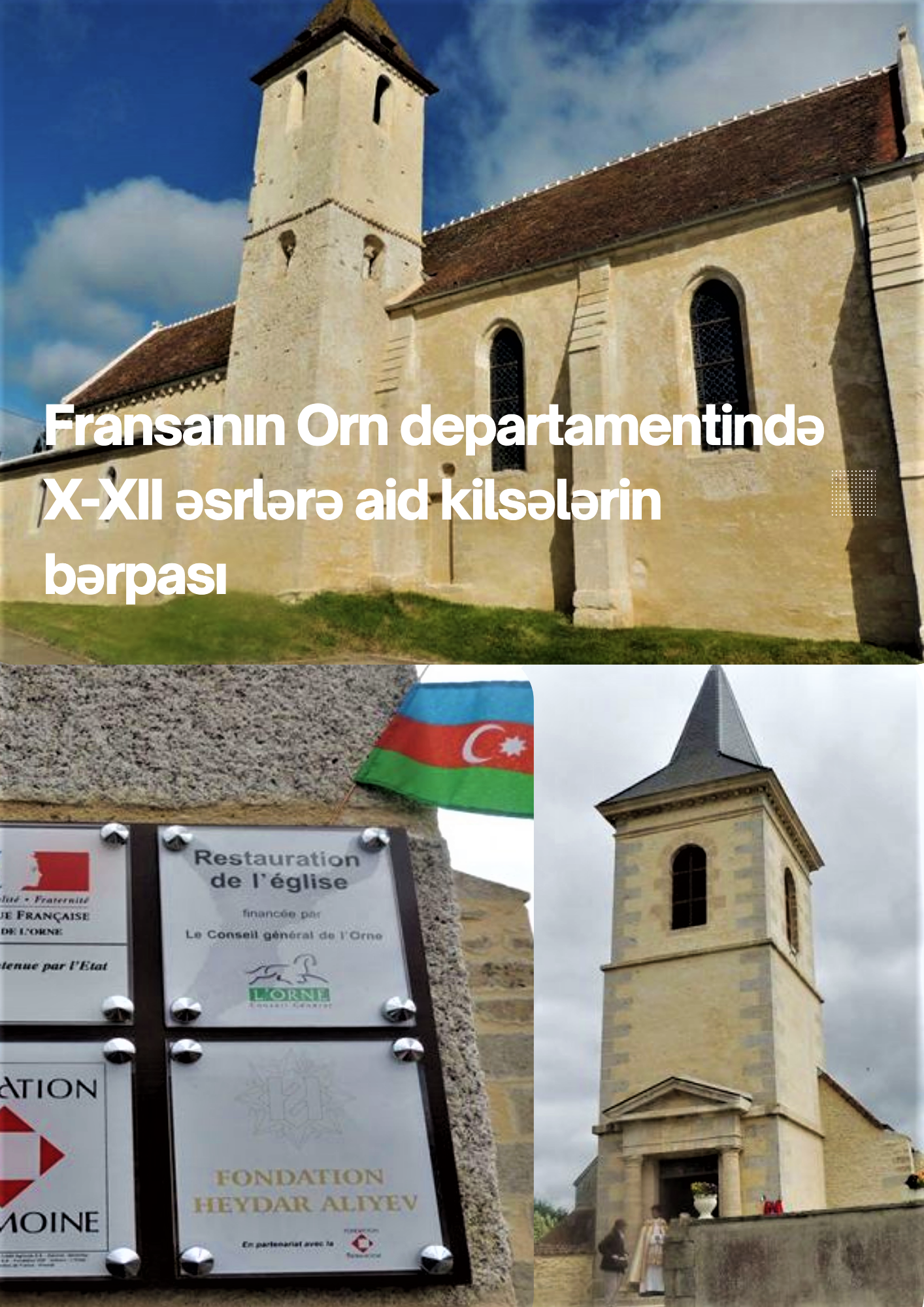
– Heydar Aliyev Foundation’s contribution to the fundraising campaign for the reconstruction of the Berlin City Palace (Berliner Schloss), which was destroyed and burned during World War II;
– Restoration of the Hall of Philosophers in Rome’s Capitoline Museums;
– Establishment, in 2012, of new Islamic art exhibition halls at the Louvre Museum in Paris by the Heydar Aliyev Foundation;
– Signing of a bilateral agreement between the Heydar Aliyev Foundation and the Holy See for the restoration of the Roman catacombs, particularly the Catacombs of Saints Marcellinus and Peter.
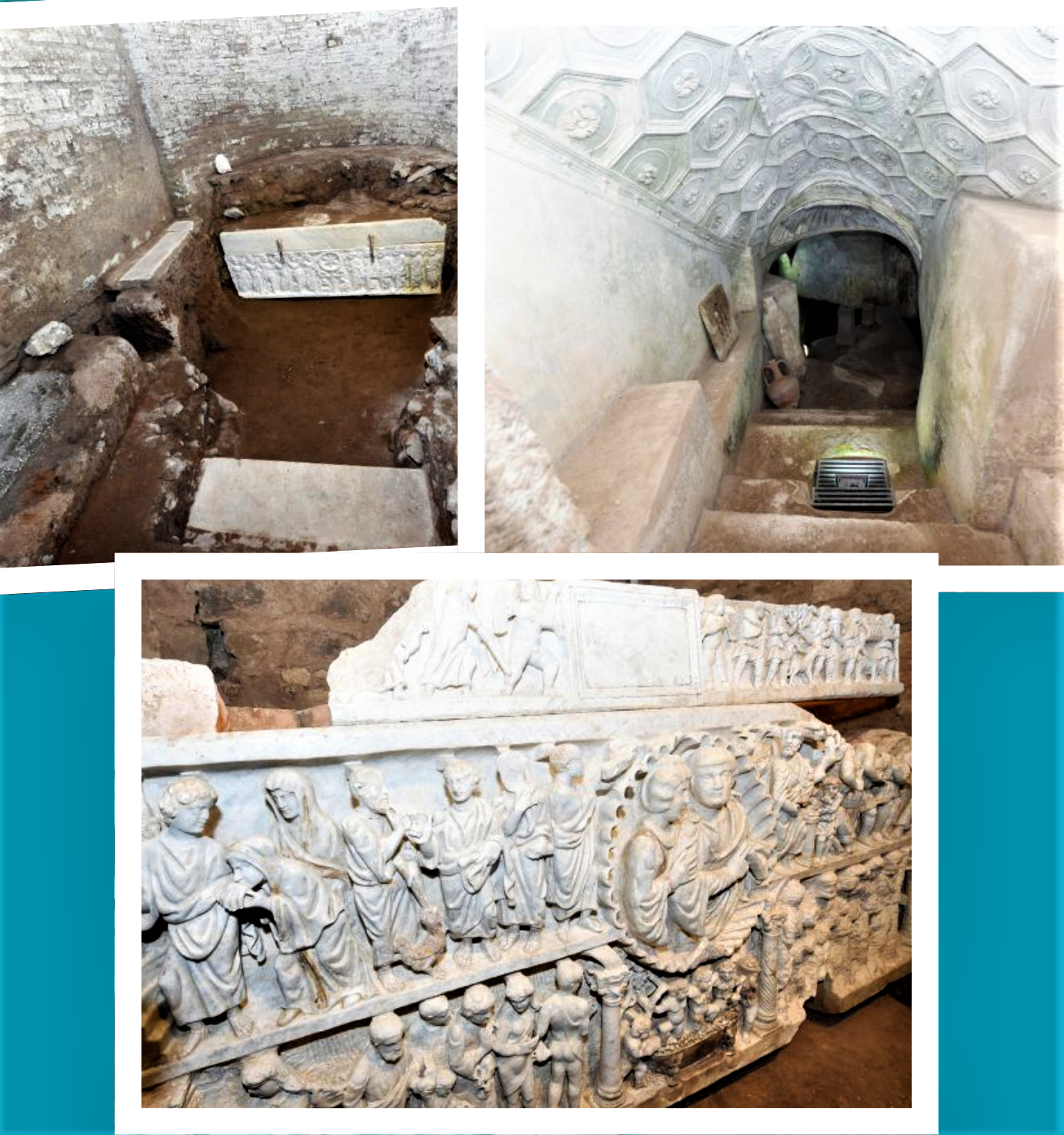
These and many other efforts stand as clear examples of Azerbaijan’s commitment to preserving global religious and cultural monuments.
The Heydar Aliyev Foundation has provided financial support for the restoration of Notre-Dame Cathedral (Cathédrale Notre-Dame de Paris).
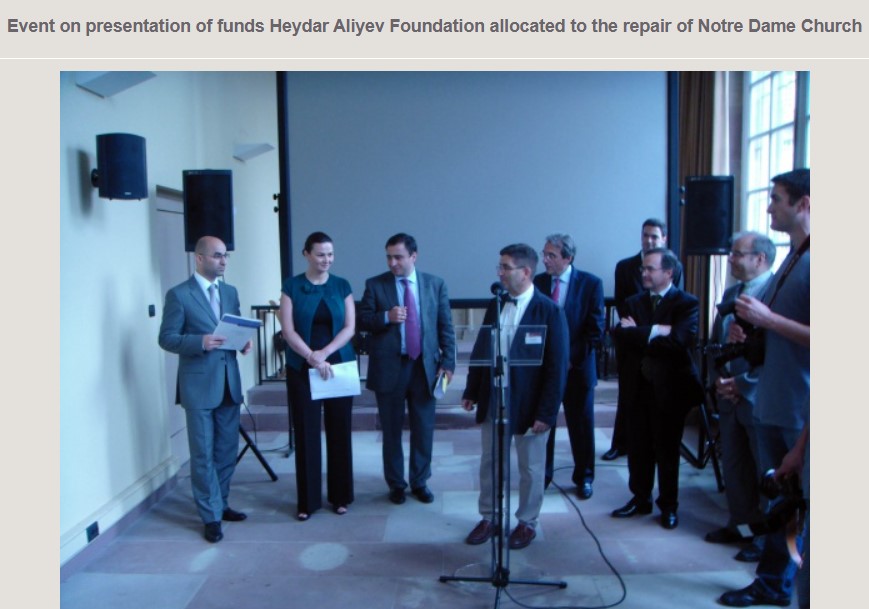
In September 2024, an agreement was signed between the Heydar Aliyev Foundation and the Governorate of Vatican City State for restoration work at the Basilica of Saint Paul Outside the Walls. As one of the Vatican’s largest monuments and a UNESCO World Heritage Site since 1980, the Basilica’s restoration receives special backing from the Heydar Aliyev Foundation as part of its ongoing commitment to preserving historic landmarks of universal significance.
5) Under the relevant decrees of the President of Azerbaijan, significant financial allocations are made each year from the state budget to support the activities of religious confessions in the country and to further develop interfaith solidarity. These funds are provided to religious organizations including the Baku and Azerbaijan Diocese of the Russian Orthodox Church, the Religious Community of Mountain Jews of Baku, the Religious Community of European Jews of Baku, the Religious Community of Sephardic Jews of Baku, the Apostolic Prefecture of the Catholic Church, and the Albanian-Udi Christian Religious Community. A portion of this funding is directed toward procuring the necessary supplies and materials to help Christian communities more comfortably practice their religious beliefs, demonstrating the high level of trust and respect the Azerbaijani state shows toward other religions.
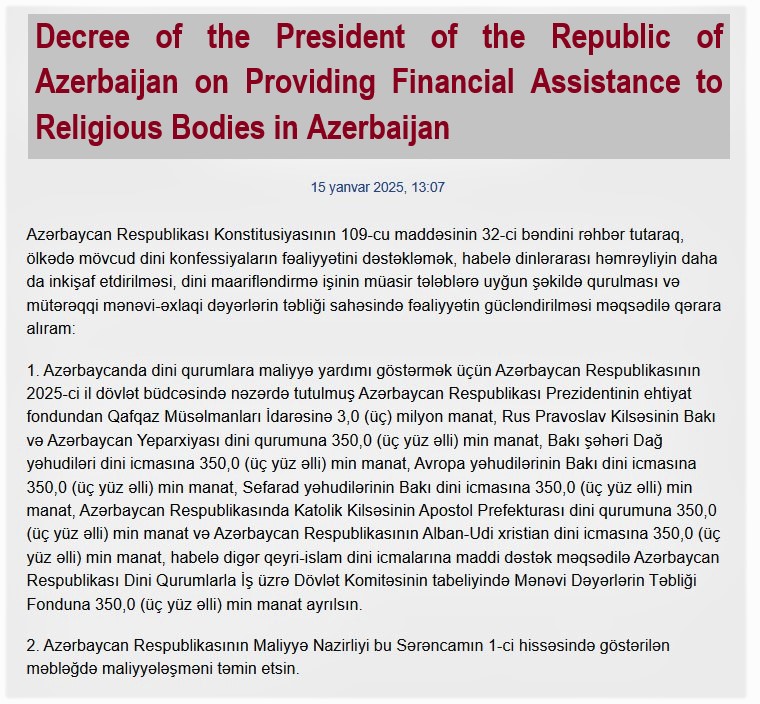
6) In Azerbaijan, the highest level of respect and friendliness is extended to representatives of all religions — a fact that has been repeatedly acknowledged by global religious leaders, including the Pope. During his 2016 visit to Azerbaijan, Pope Francis expressed his joy over the activities of the Catholic Church, whose followers are few in number worldwide. He described the Church’s recognition as a legal entity in Azerbaijan as a sign of the stability and flourishing of the Catholic community in the country.
The participation of world and traditional religious leaders, heads of influential religious centers - including patriarchs, officials from the Vatican and Al-Azhar, as well as prominent religious and public figures from various continents and faiths - at the Religious Leaders' Summits in Baku has become a cherished global tradition. These leaders have consistently praised Azerbaijan for fostering an environment where representatives of all religions coexist in harmony. At the 3rd World Summit of Religious Leaders, held on November 5-6, 2024, Christian and Jewish religious leaders described Azerbaijan as the safest and most stable country, one that upholds both religious and human values with compassion and respect.

7) Recently, during his visit to Azerbaijan, Frank-Walter Steinmeier, the President of the Federal Republic of Germany, was accompanied by Armin Laschet, a politician from the Christian Democratic Union (CDU), who shared on his social media platform that Azerbaijan exemplifies a genuine environment of religious friendship and brotherhood, where the peaceful coexistence of Jews, Christians, and Muslims serves as a true model of harmony.
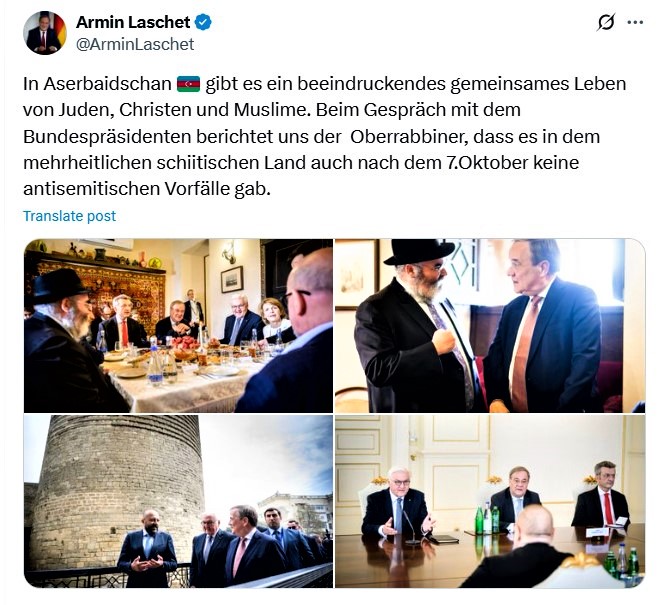
There are hundreds of such opinions and remarks. The strengthening of mutual trust between religions in Azerbaijan has led to a significant increase in the number of religious communities functioning together. Currently, Azerbaijan is home to 16 churches, 7 synagogues, 23 Christian prayer houses, 1 Baha'i temple, and 1 Krishna temple. The total number of registered religious organizations has reached 1,003, of which 957 are Muslim, 27 are Christian, 8 are Jewish, 2 are Baha'i, and 1 is a Krishna Consciousness community.
These historical facts and evidence once again demonstrate Azerbaijan's commitment to preserving its multi-ethnic, multi-confessional cultural heritage, national and spiritual values, including the restoration and protection of Christian places of worship and cultural monuments.
In contrast, accusing the Azerbaijani state of violence against Christian religious sites reflects the Christian Post's intention to foster religious discrimination and sow discord between religions, driven by the interests of certain parties.




















